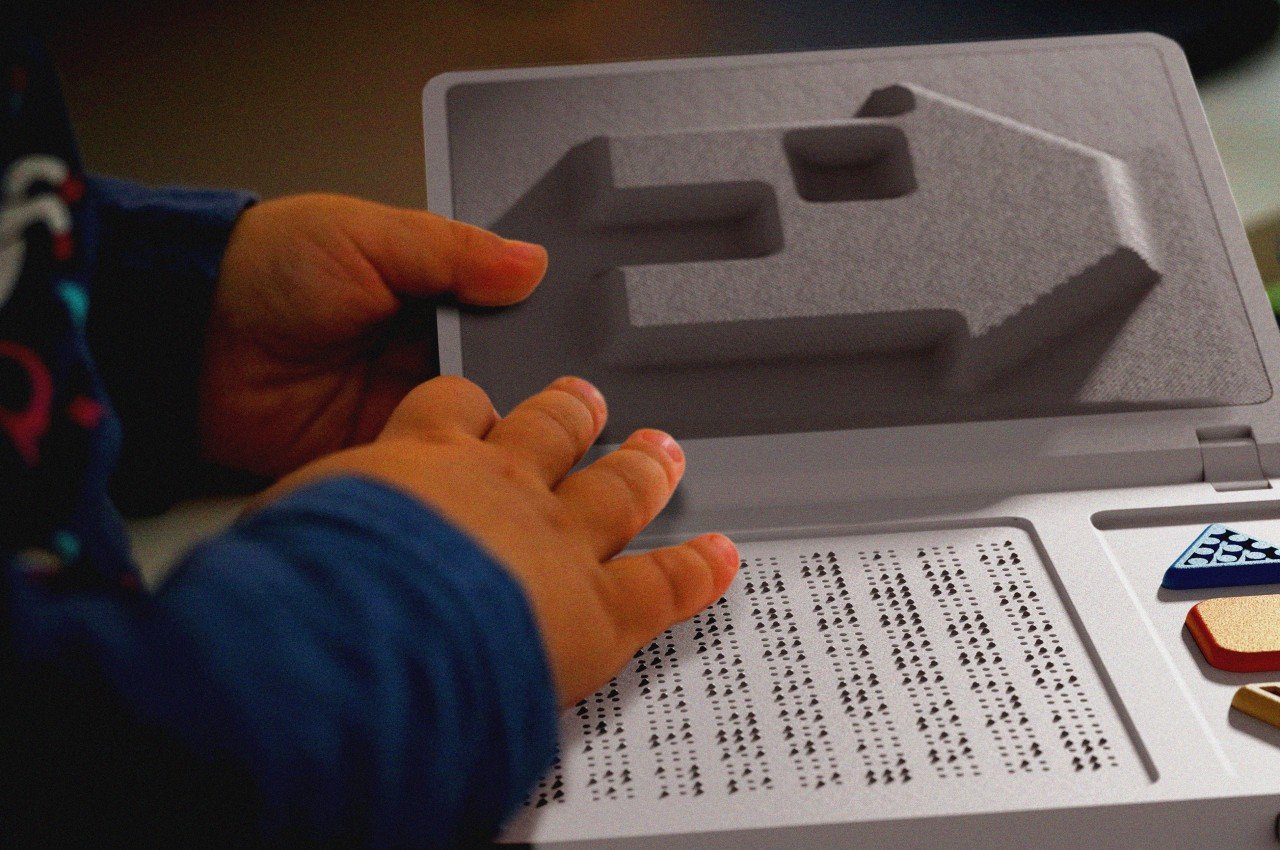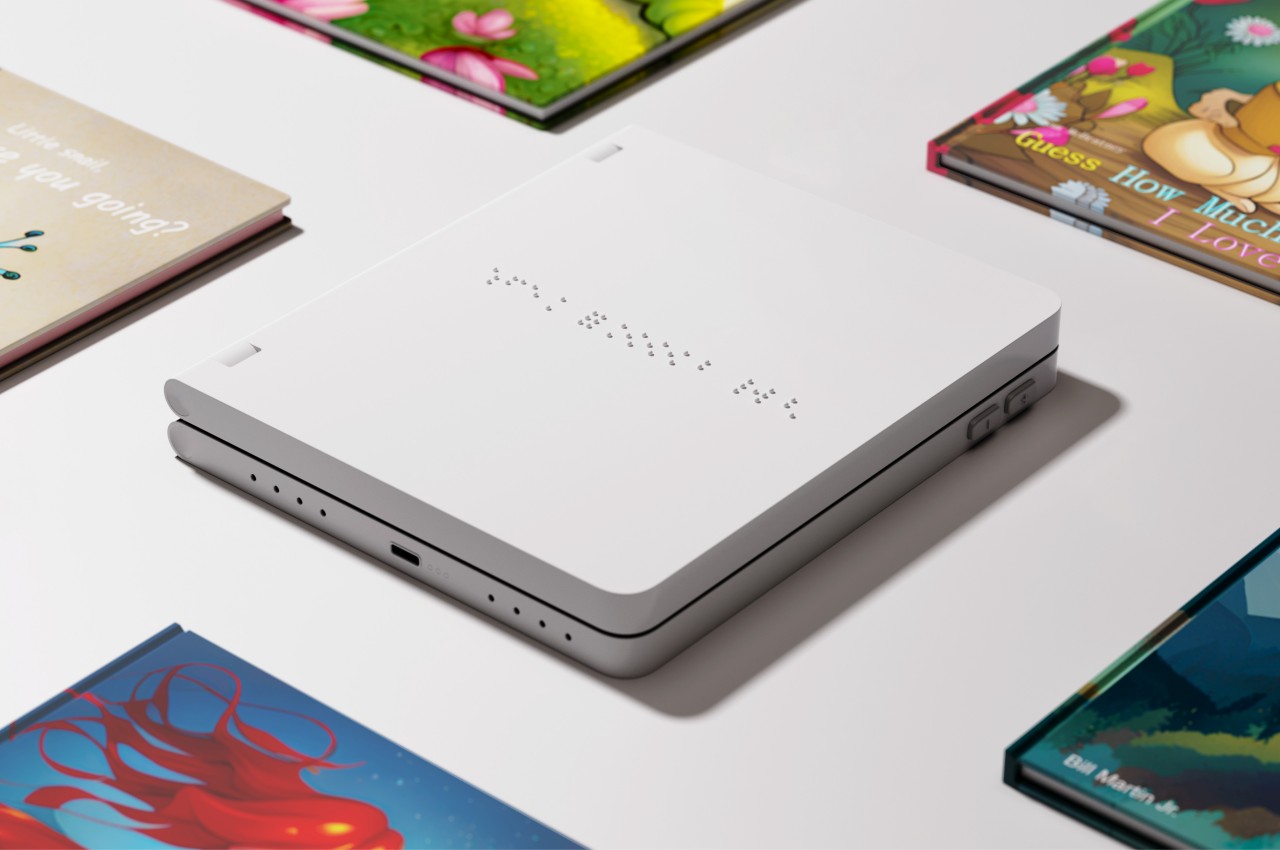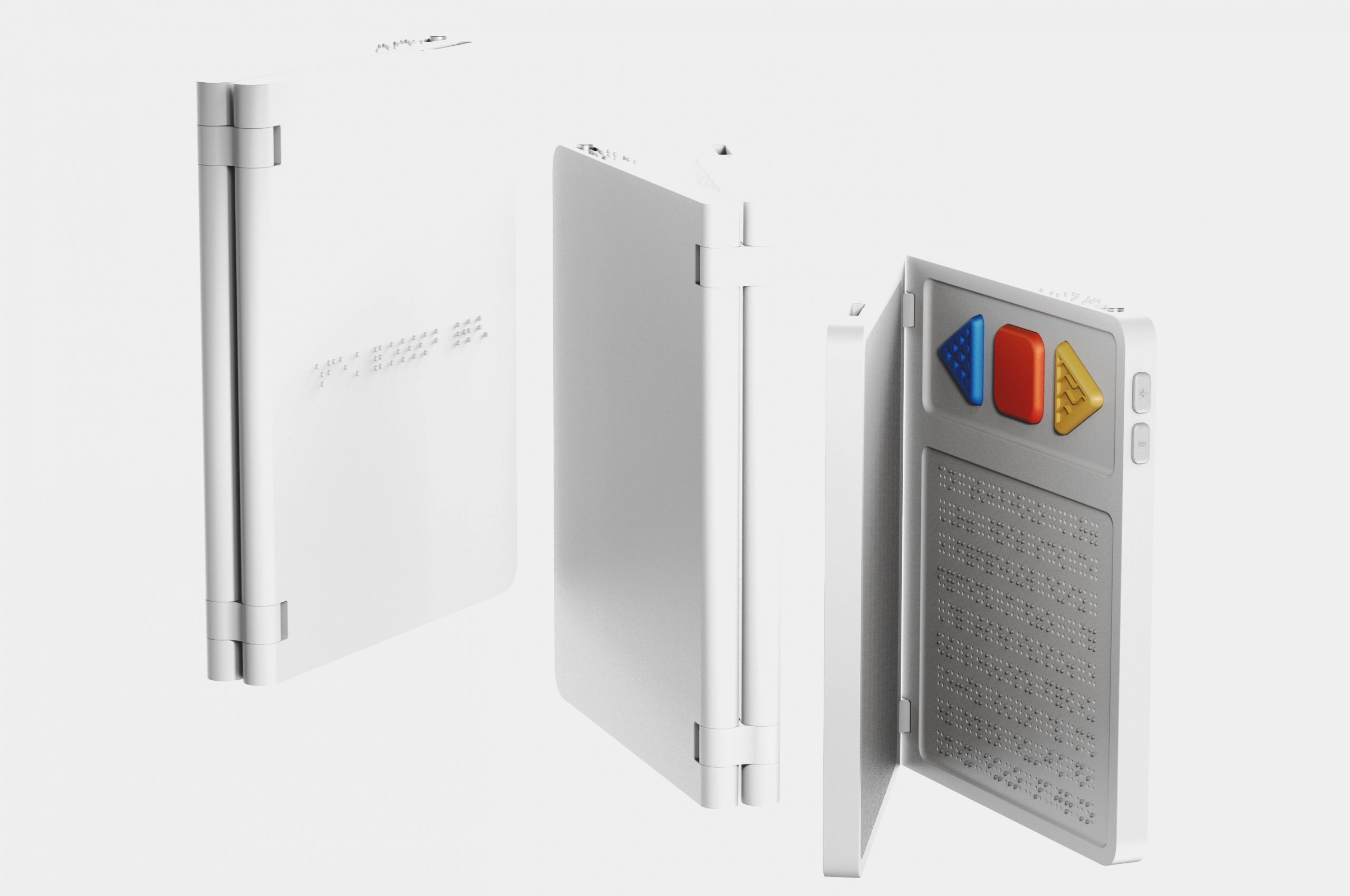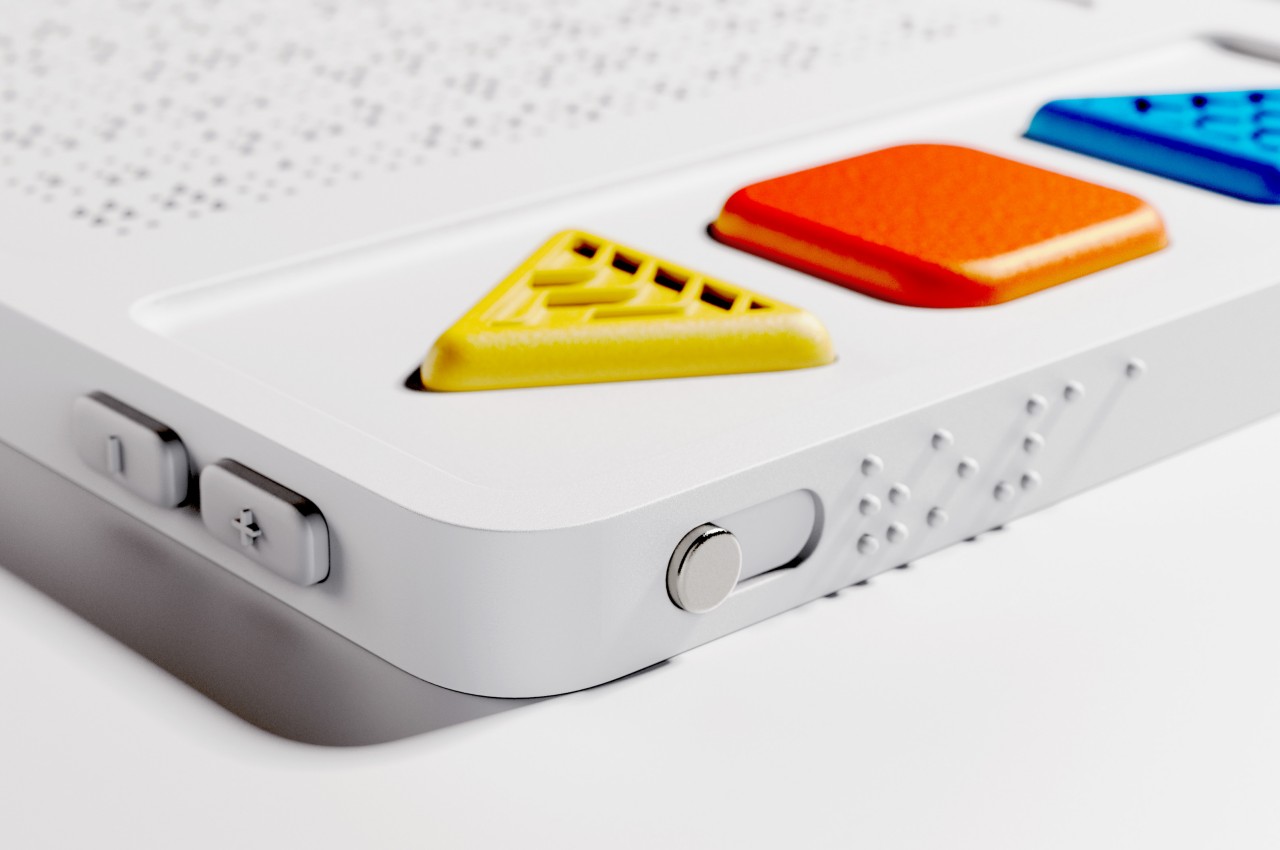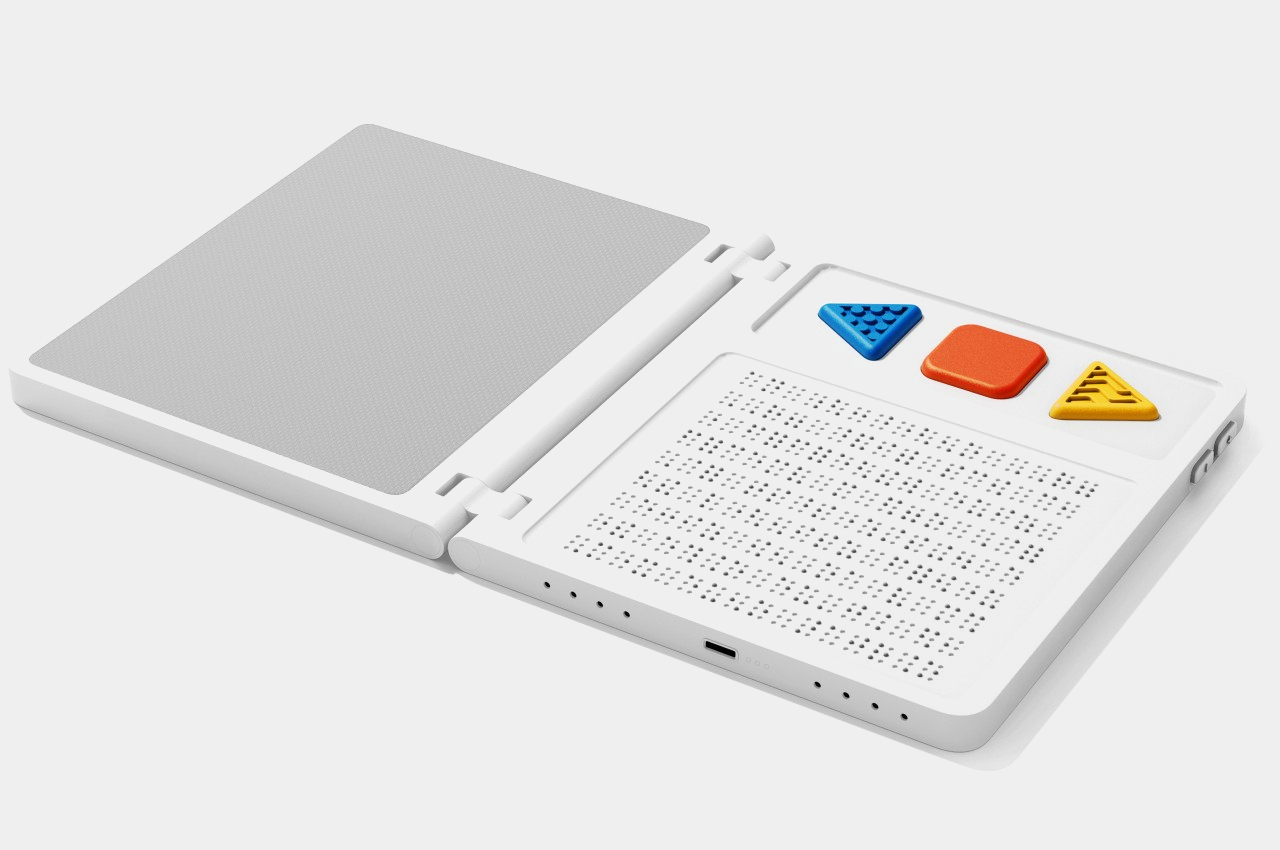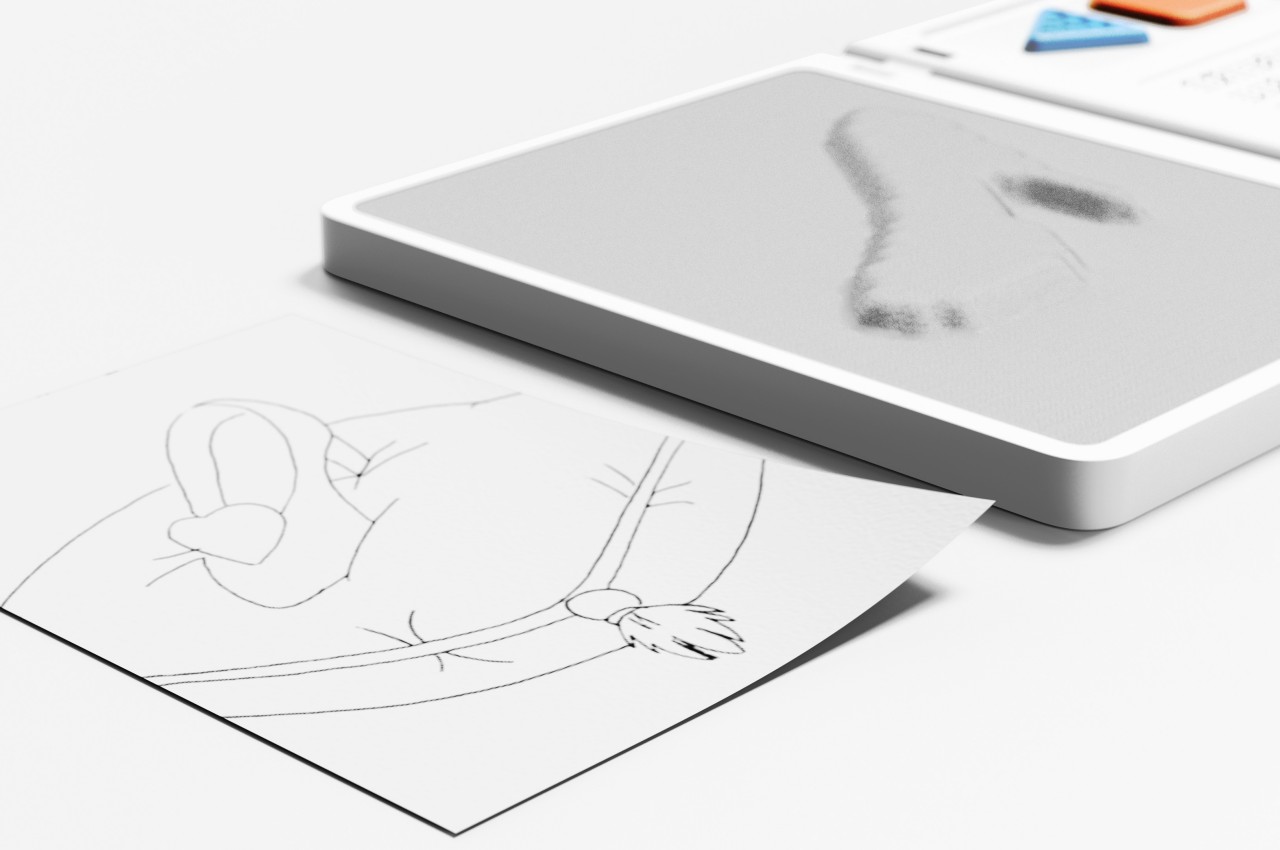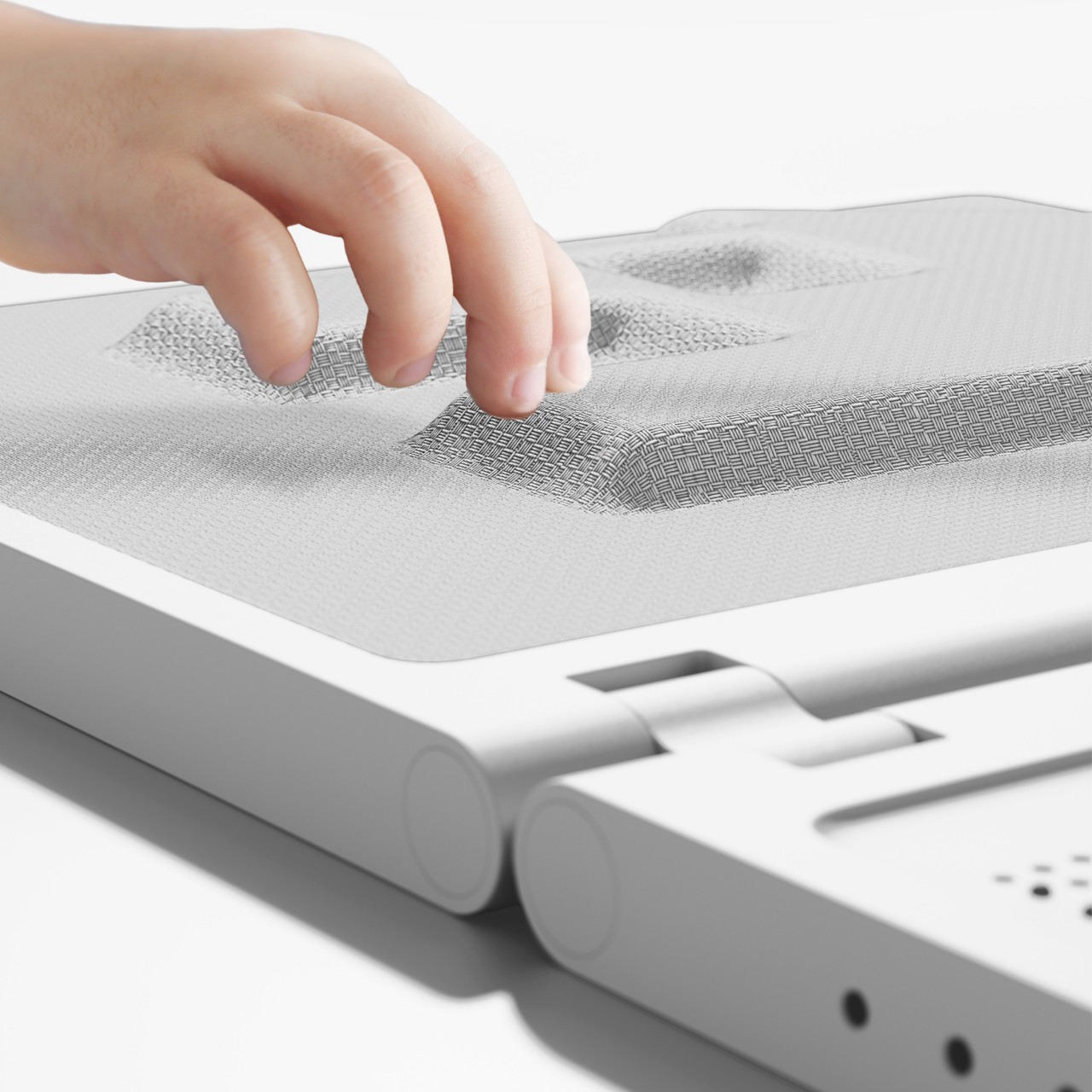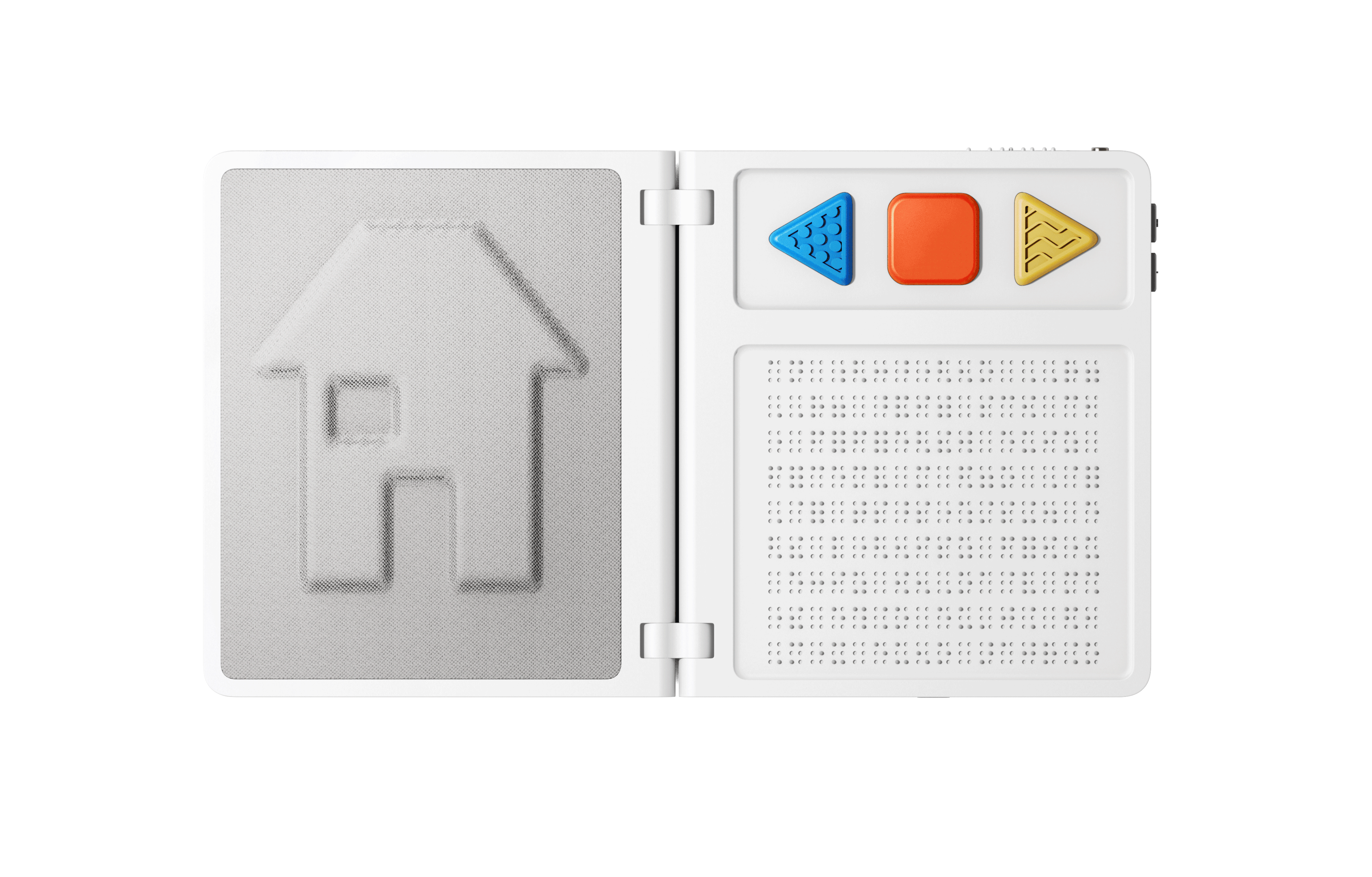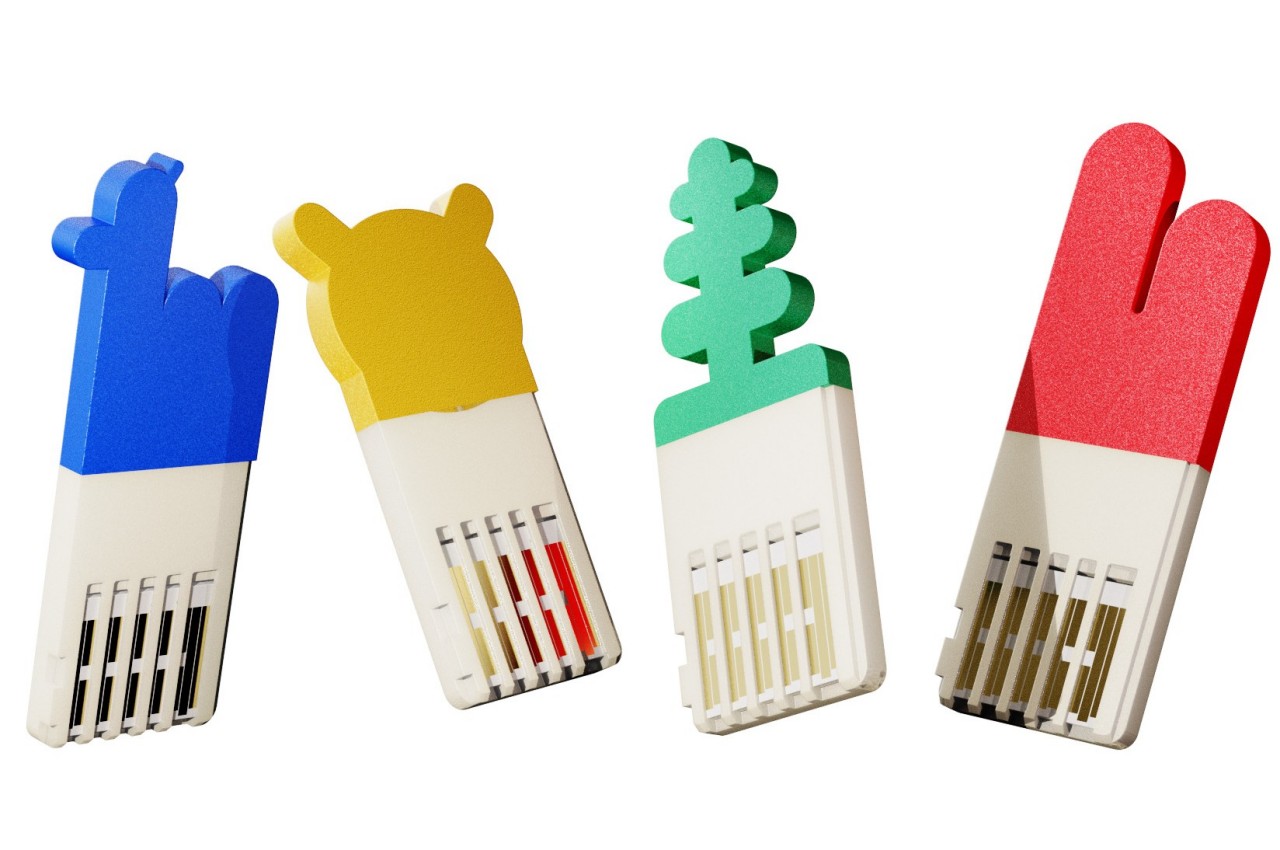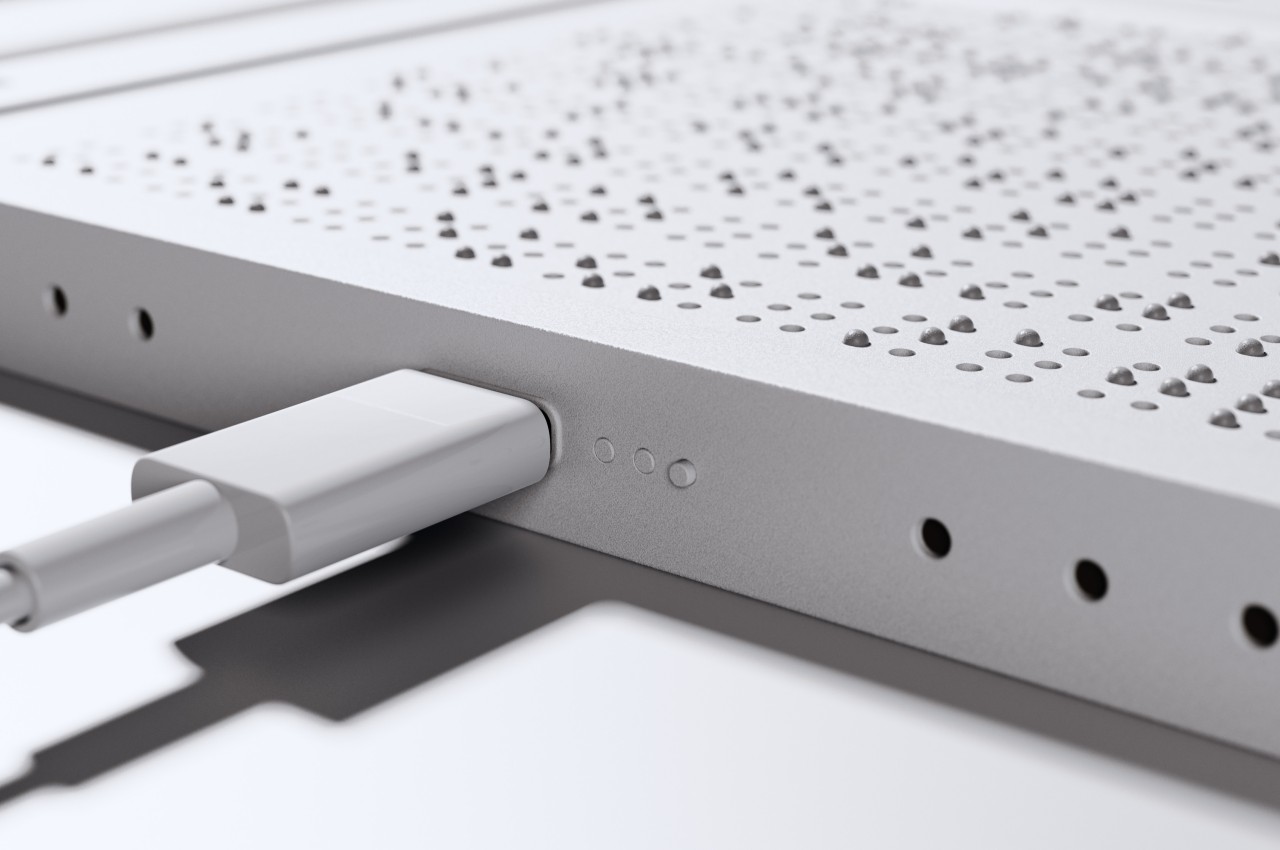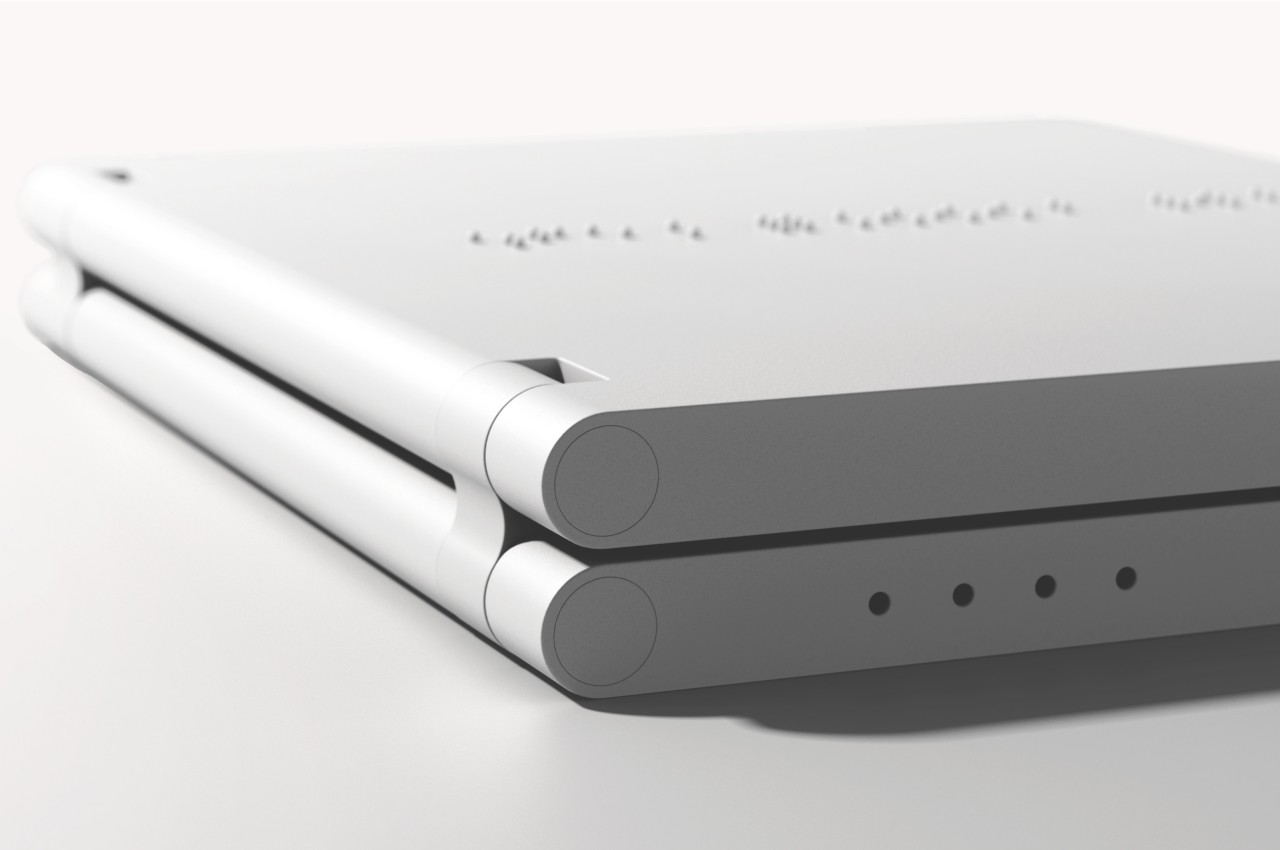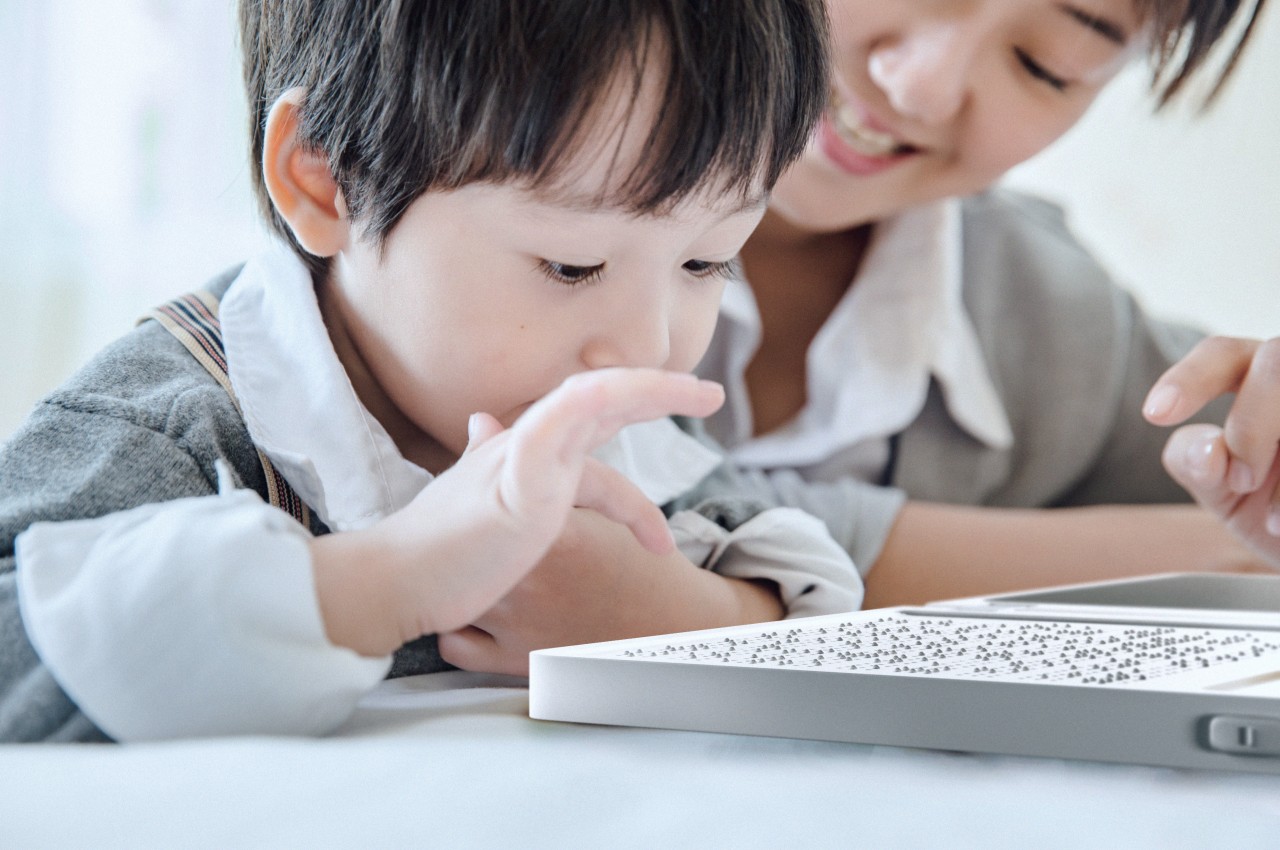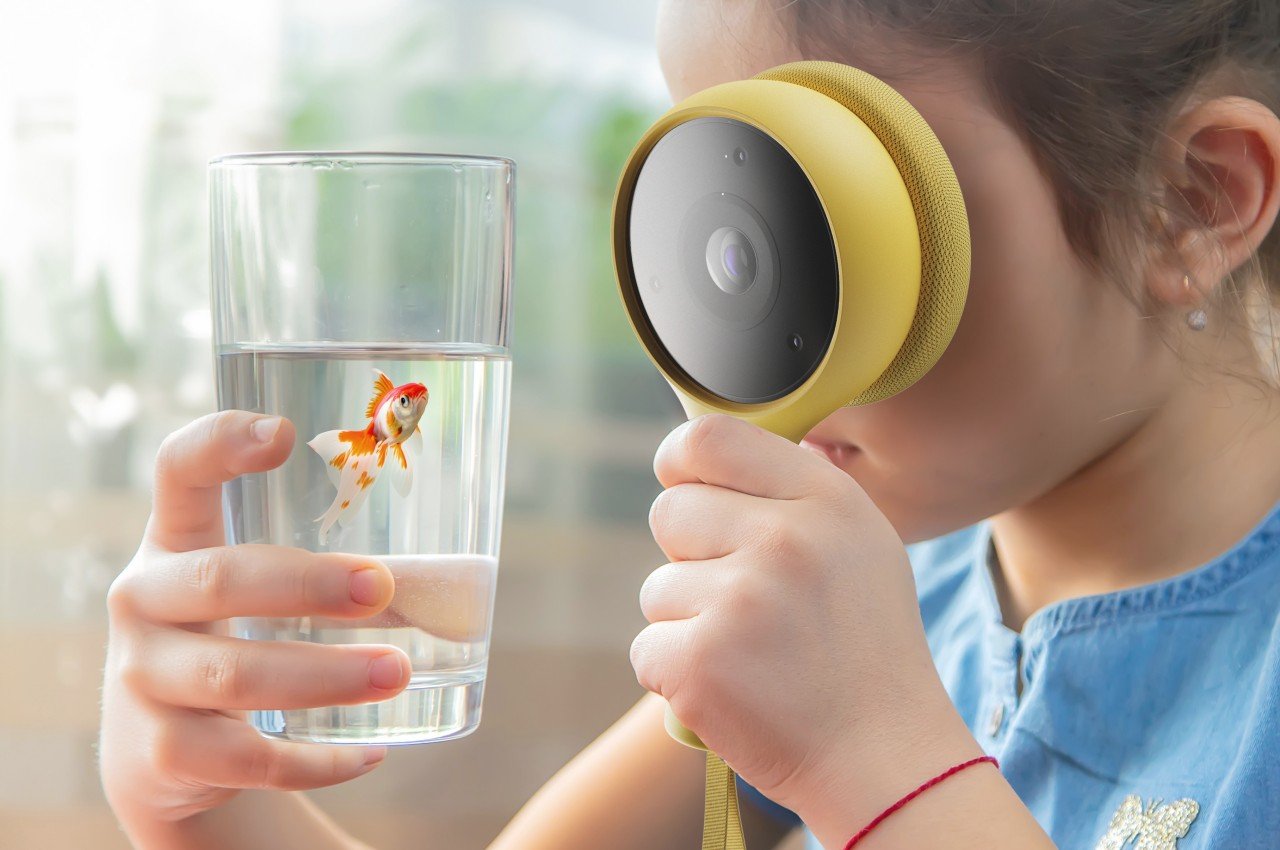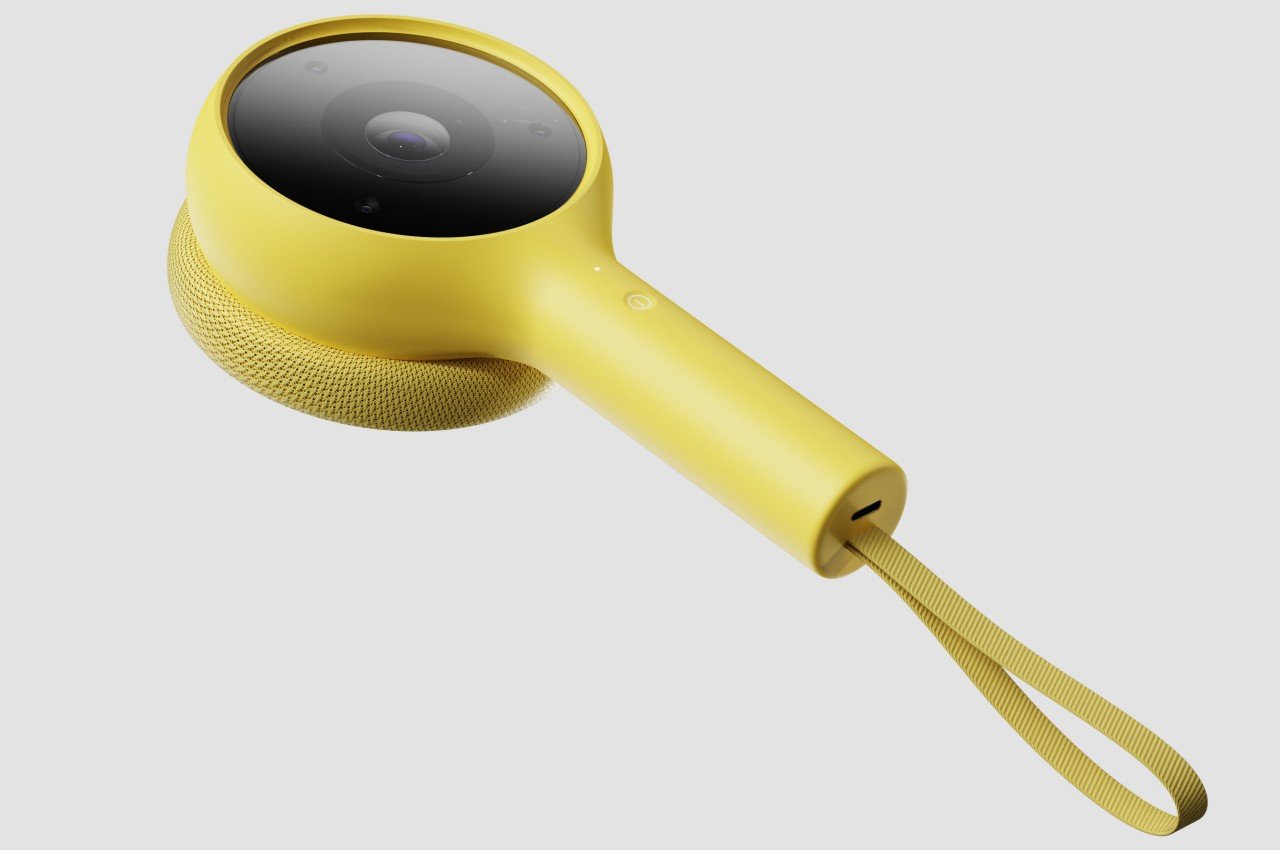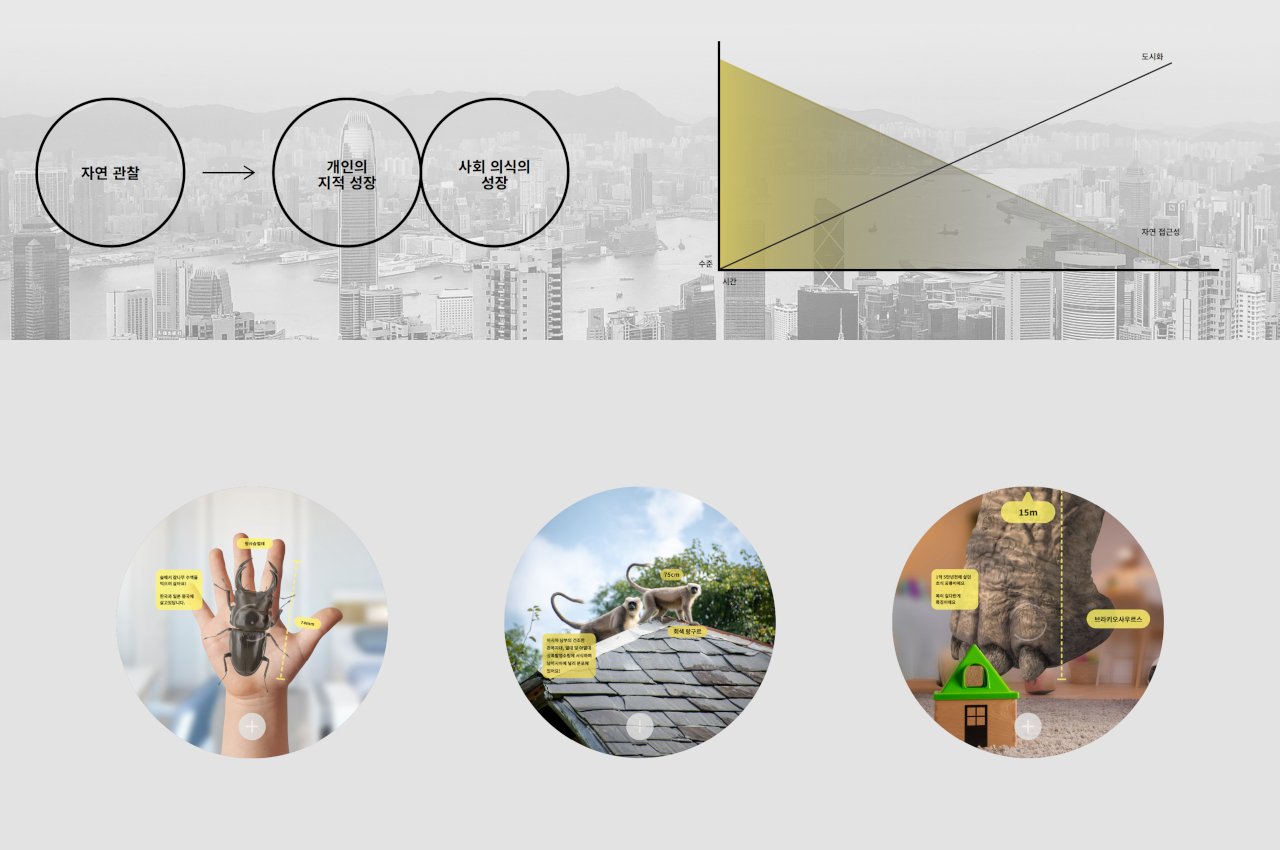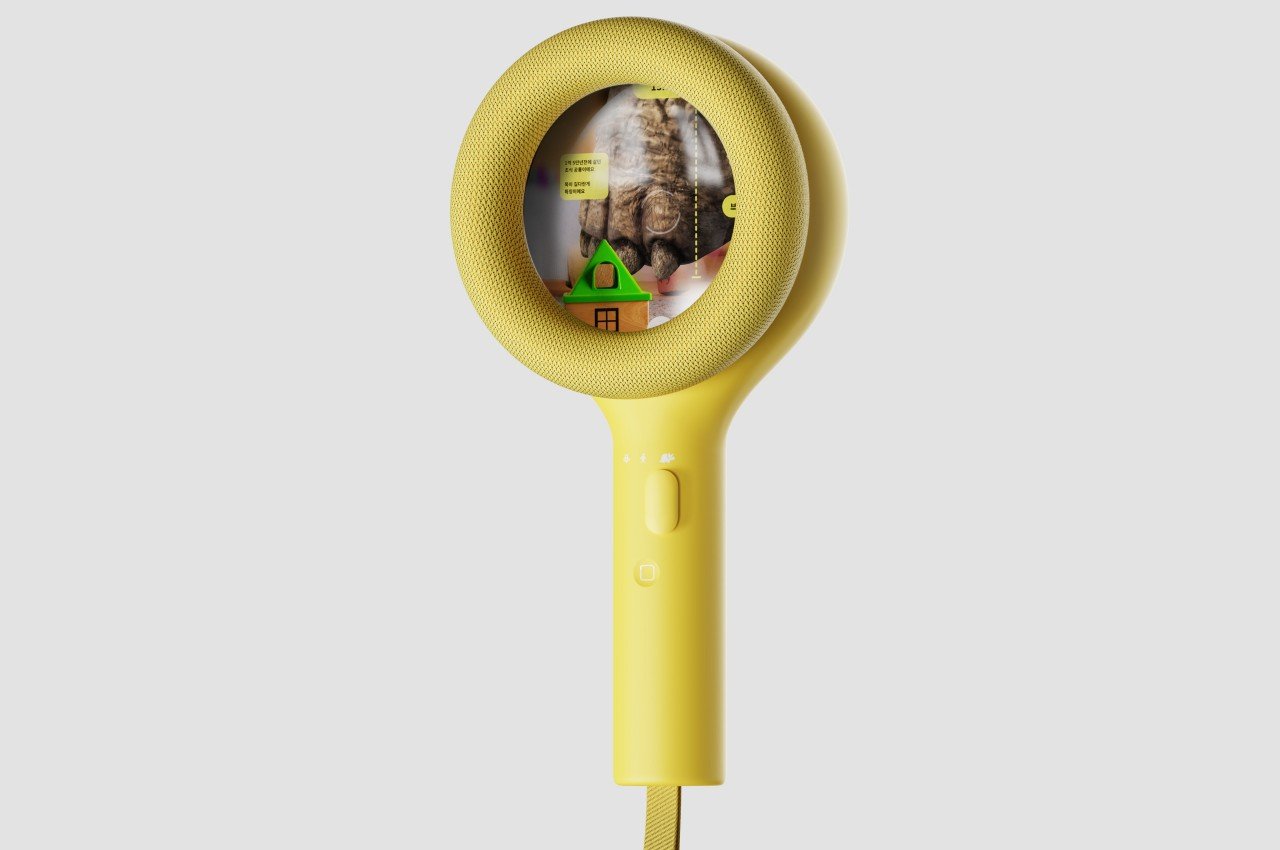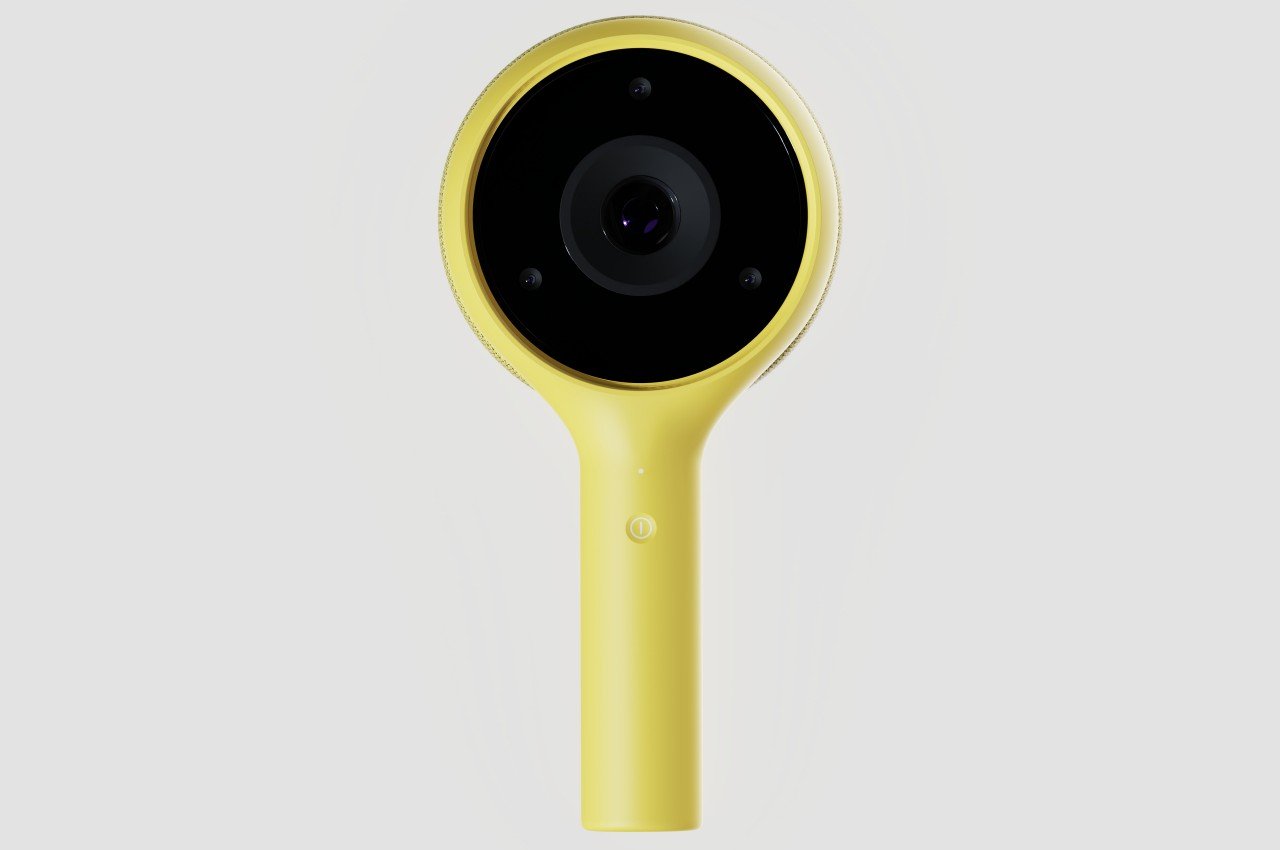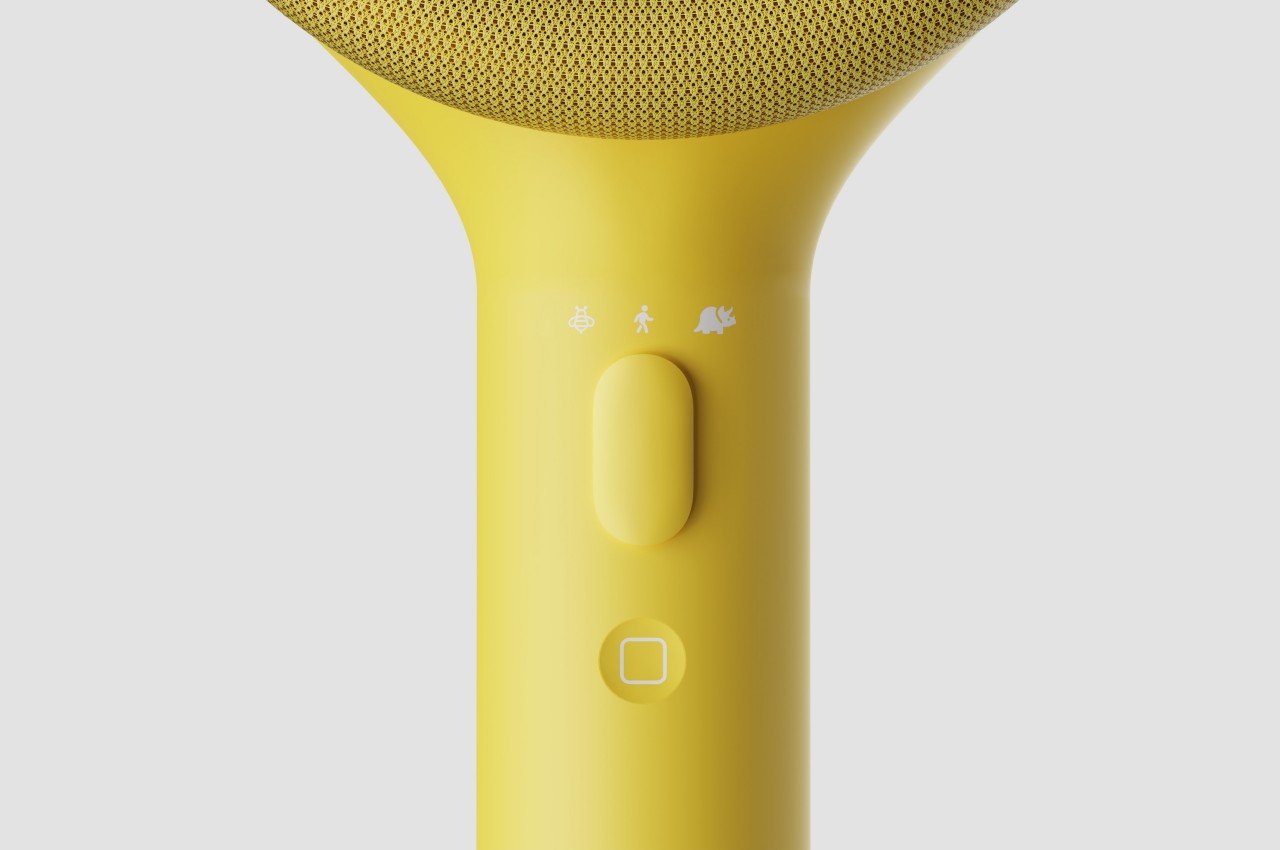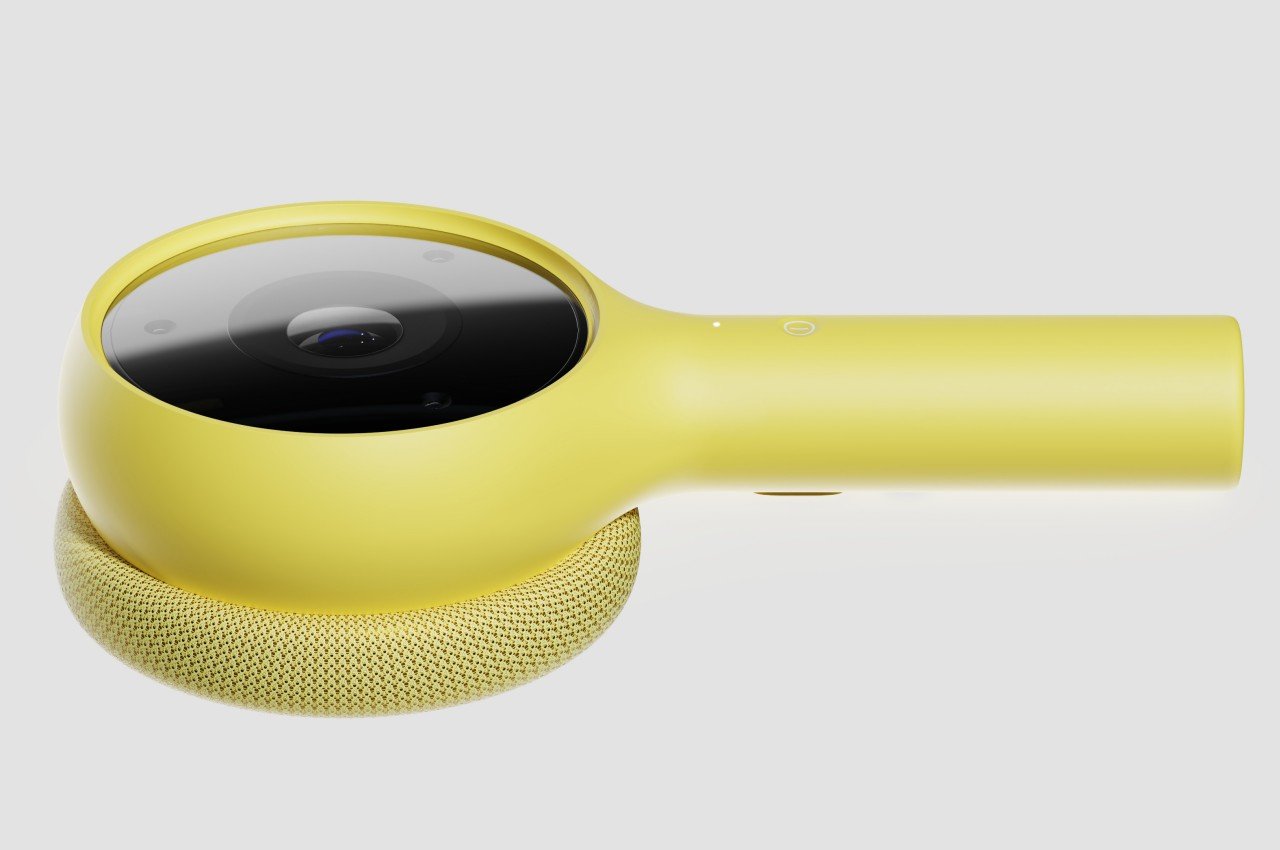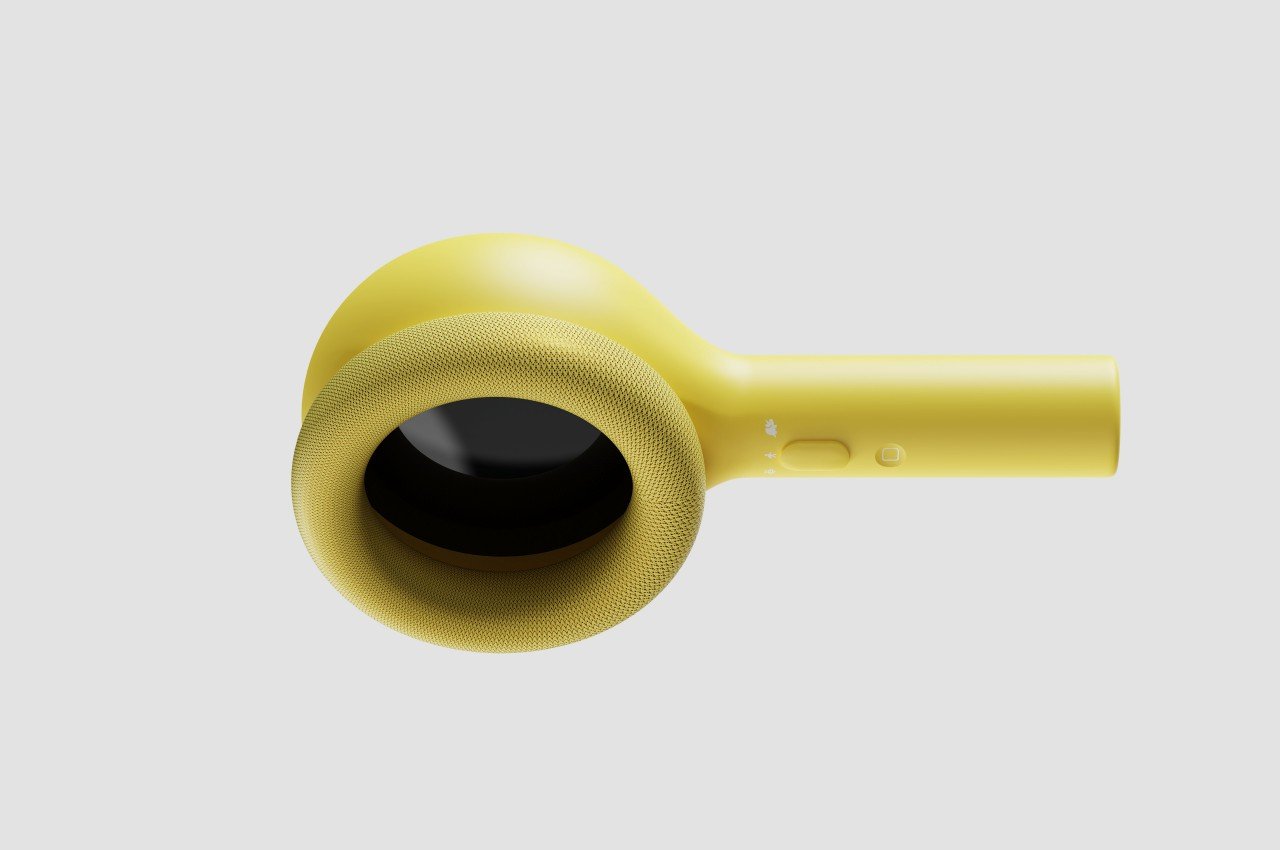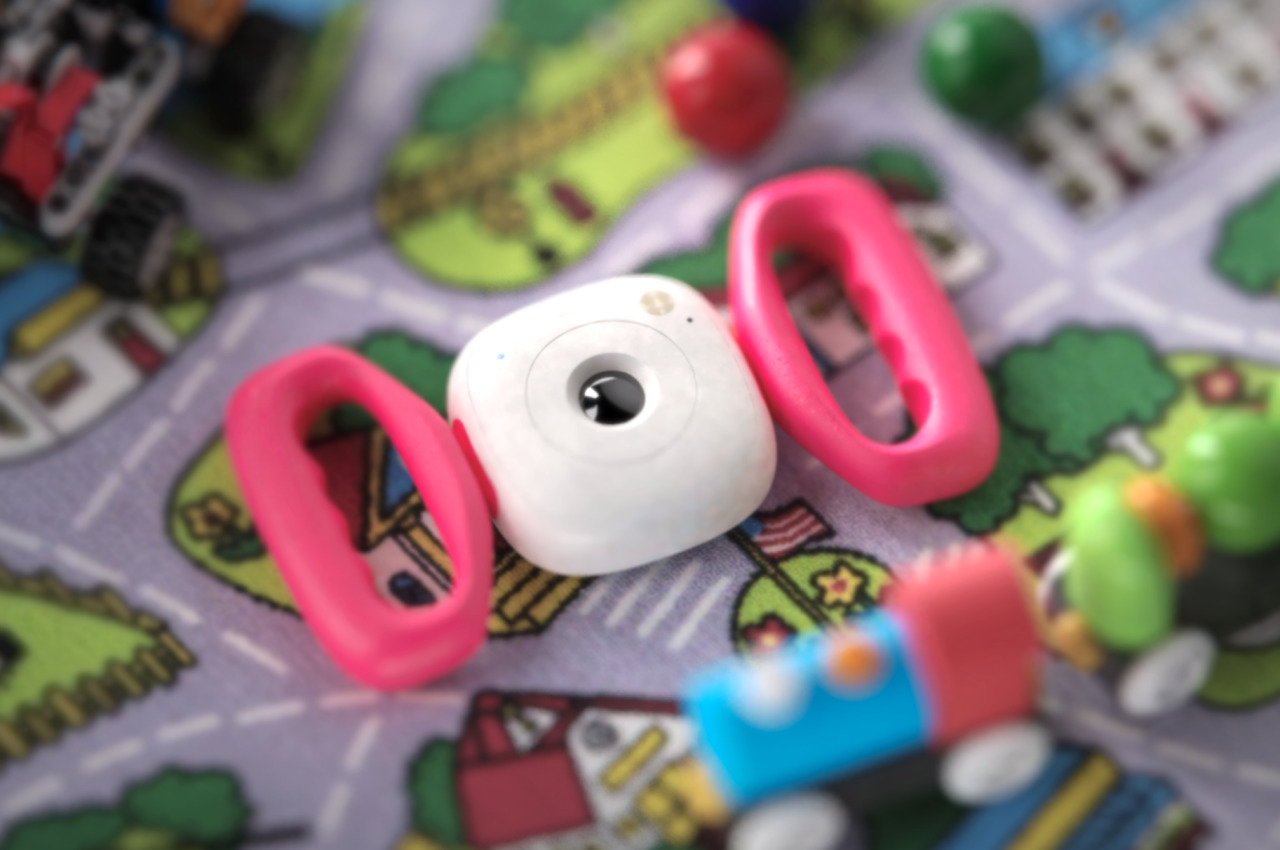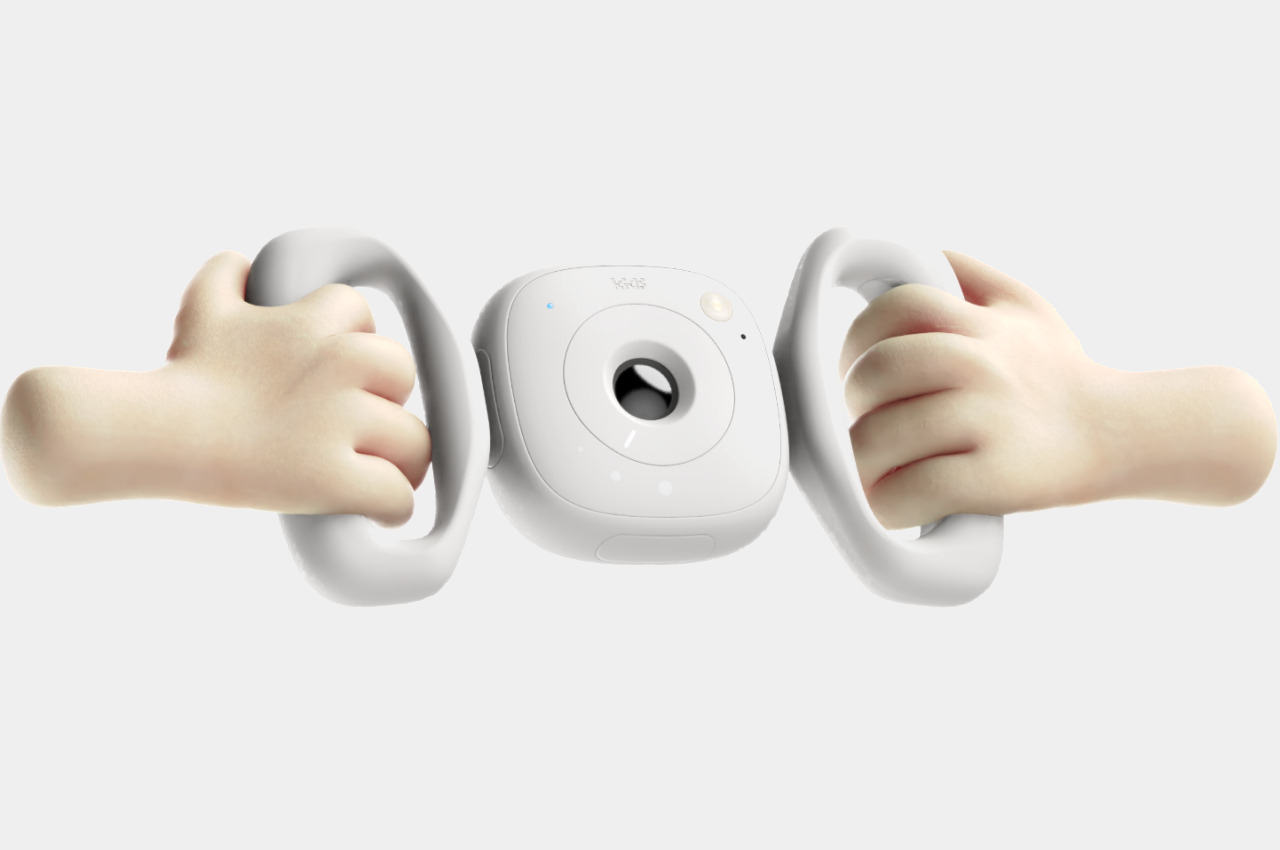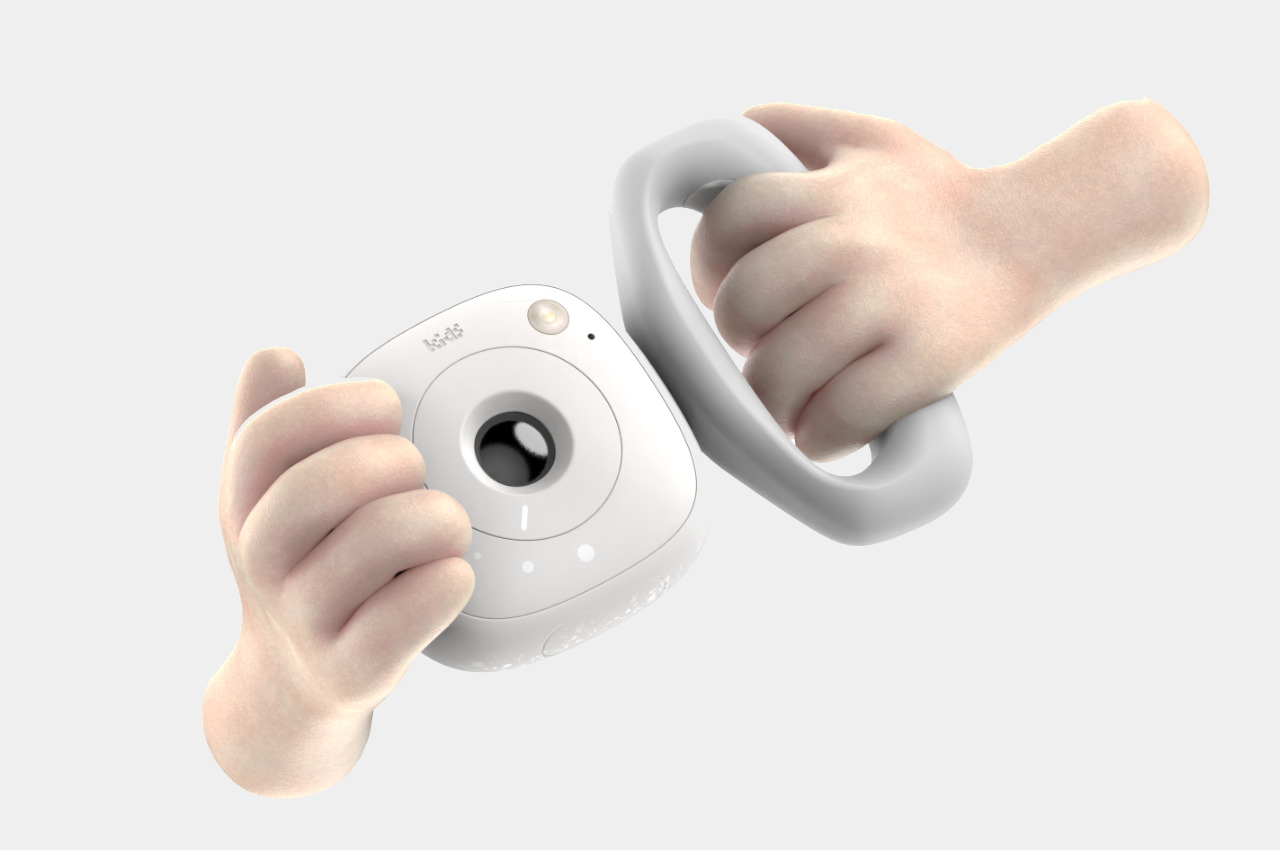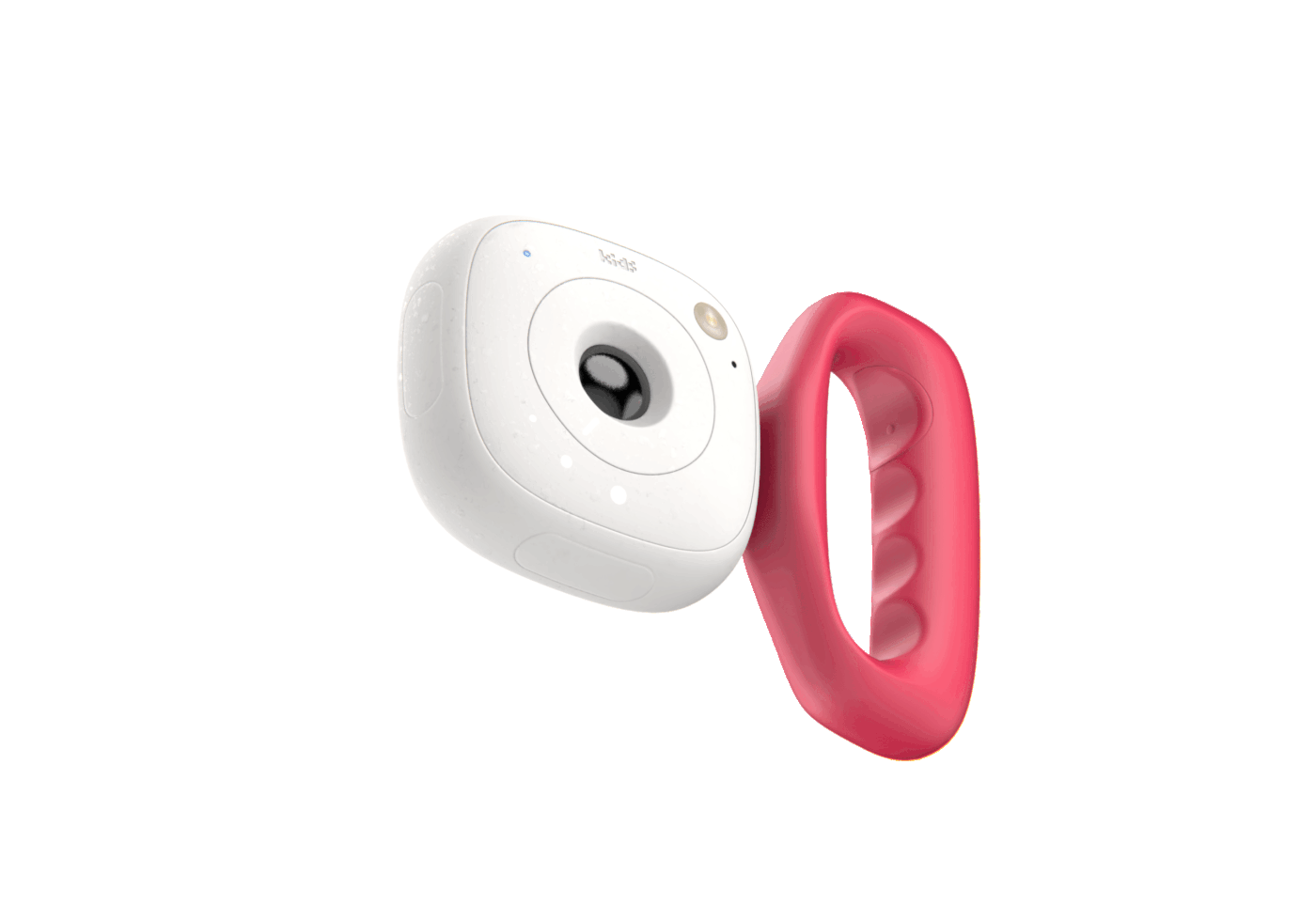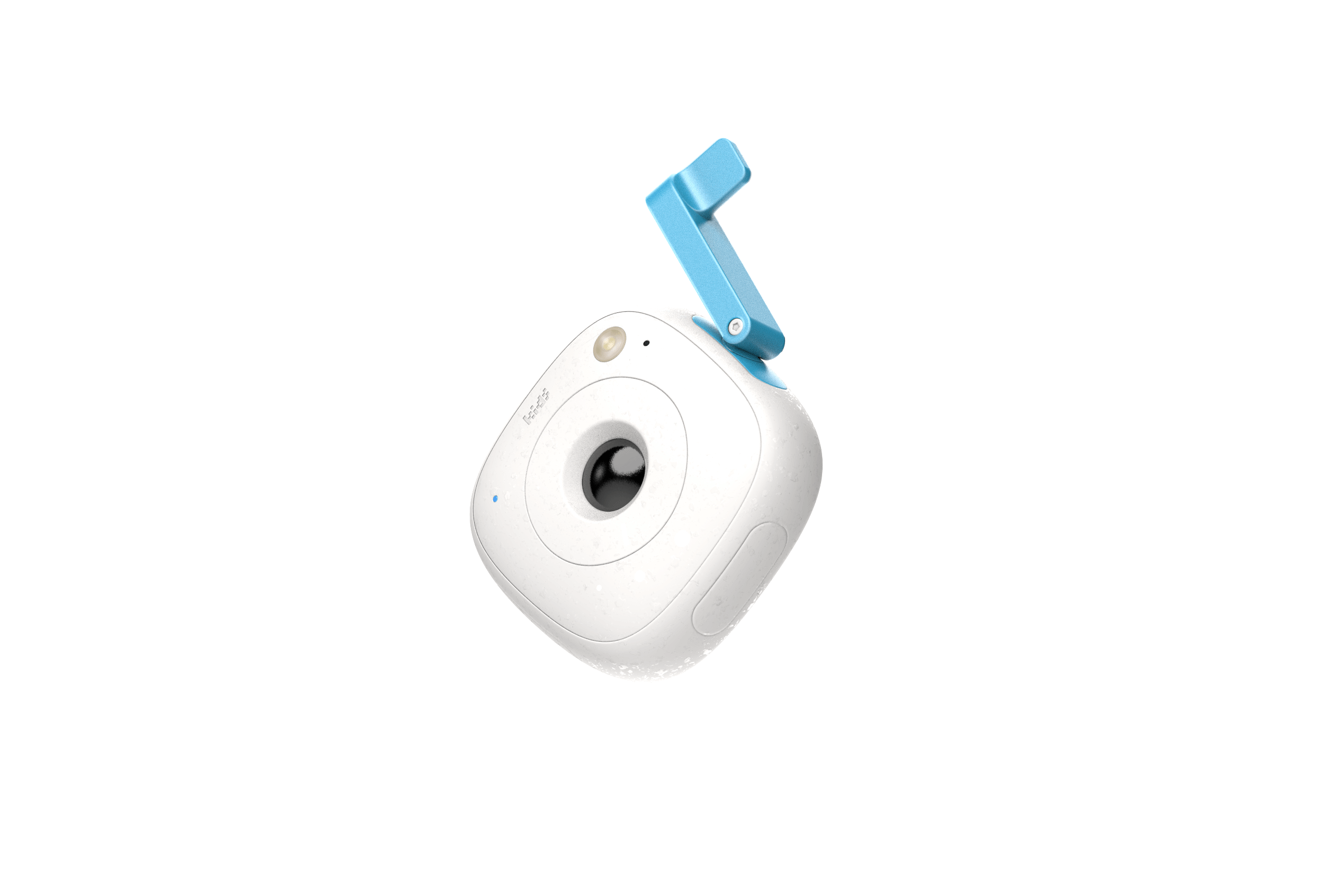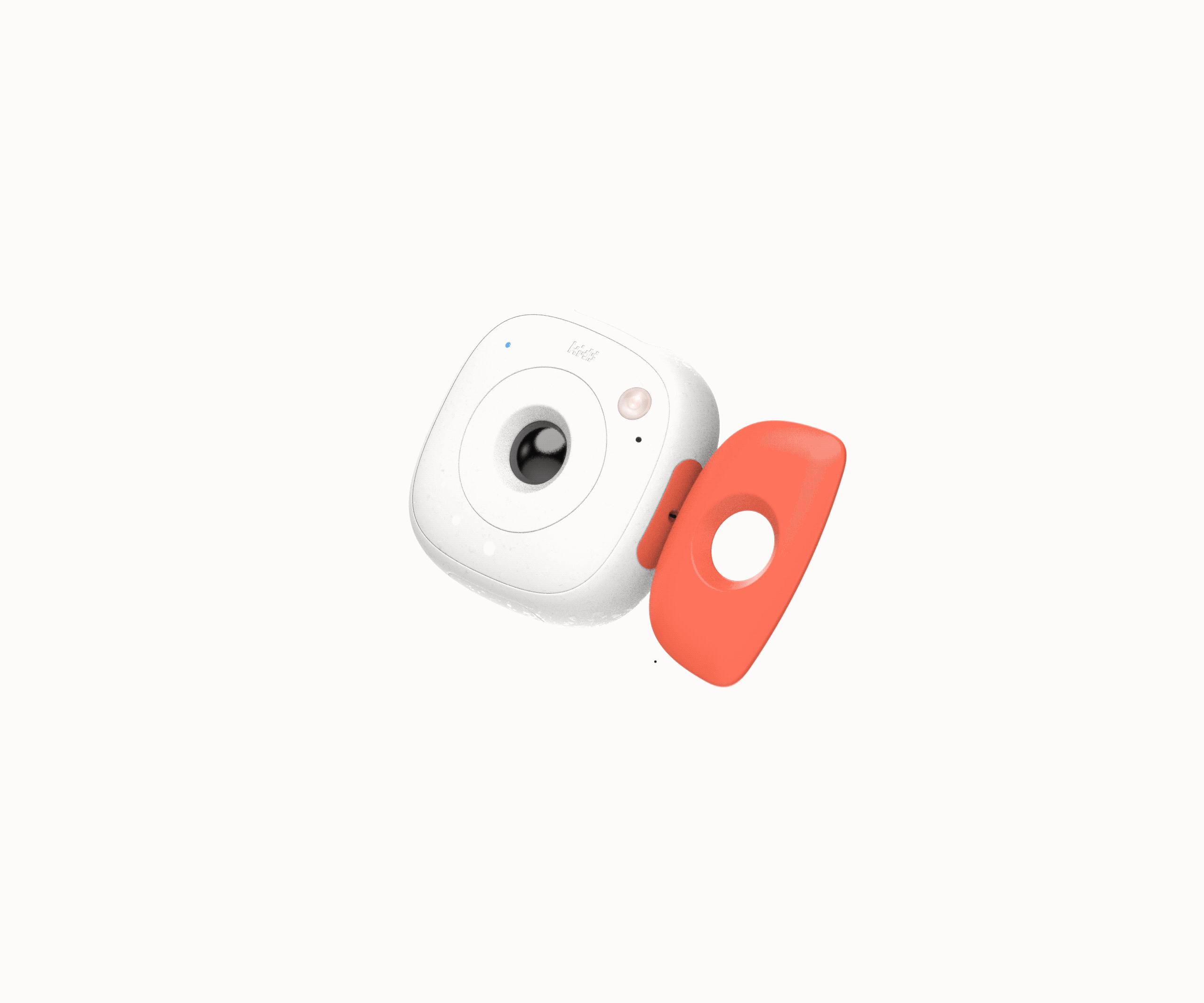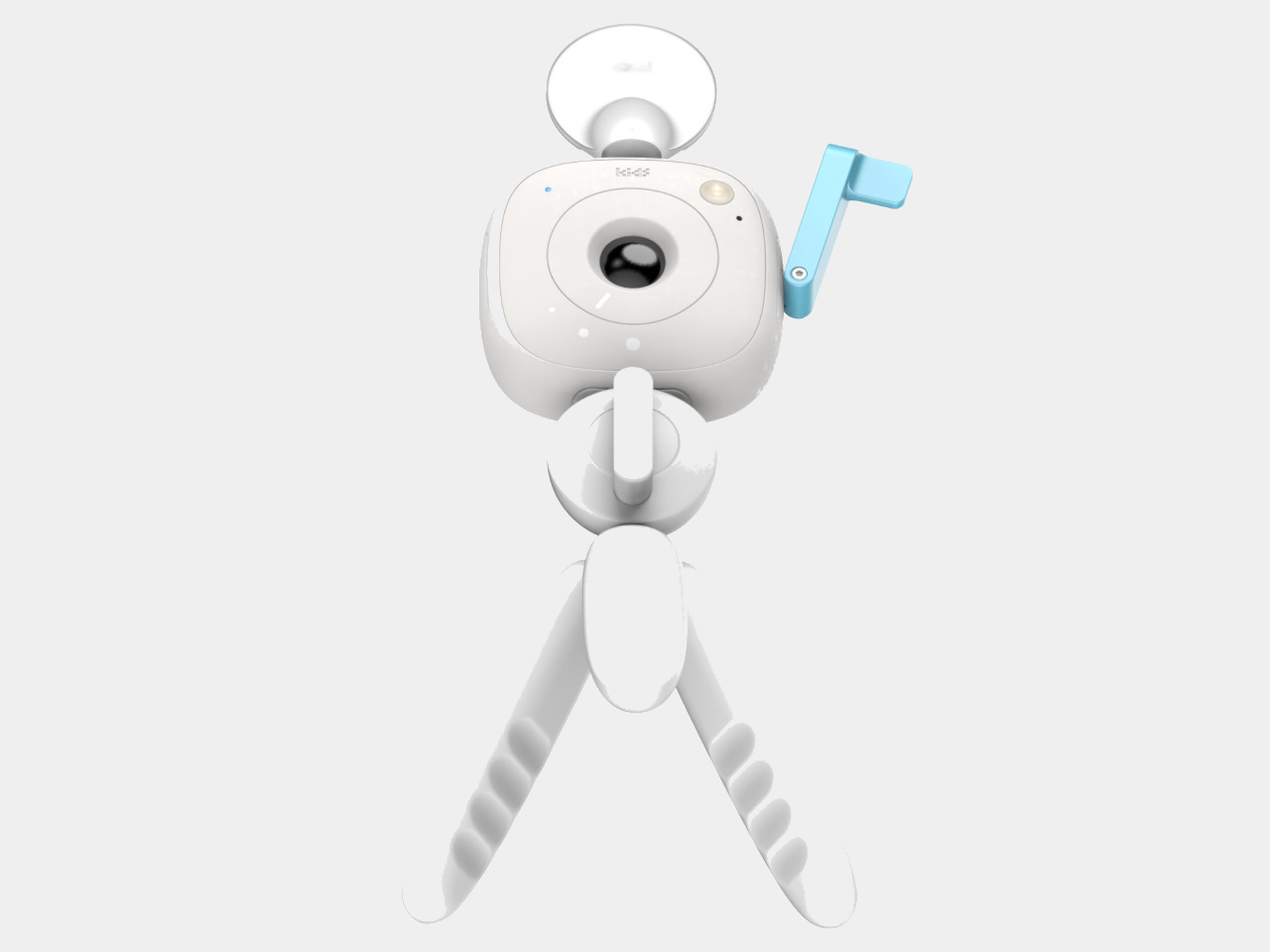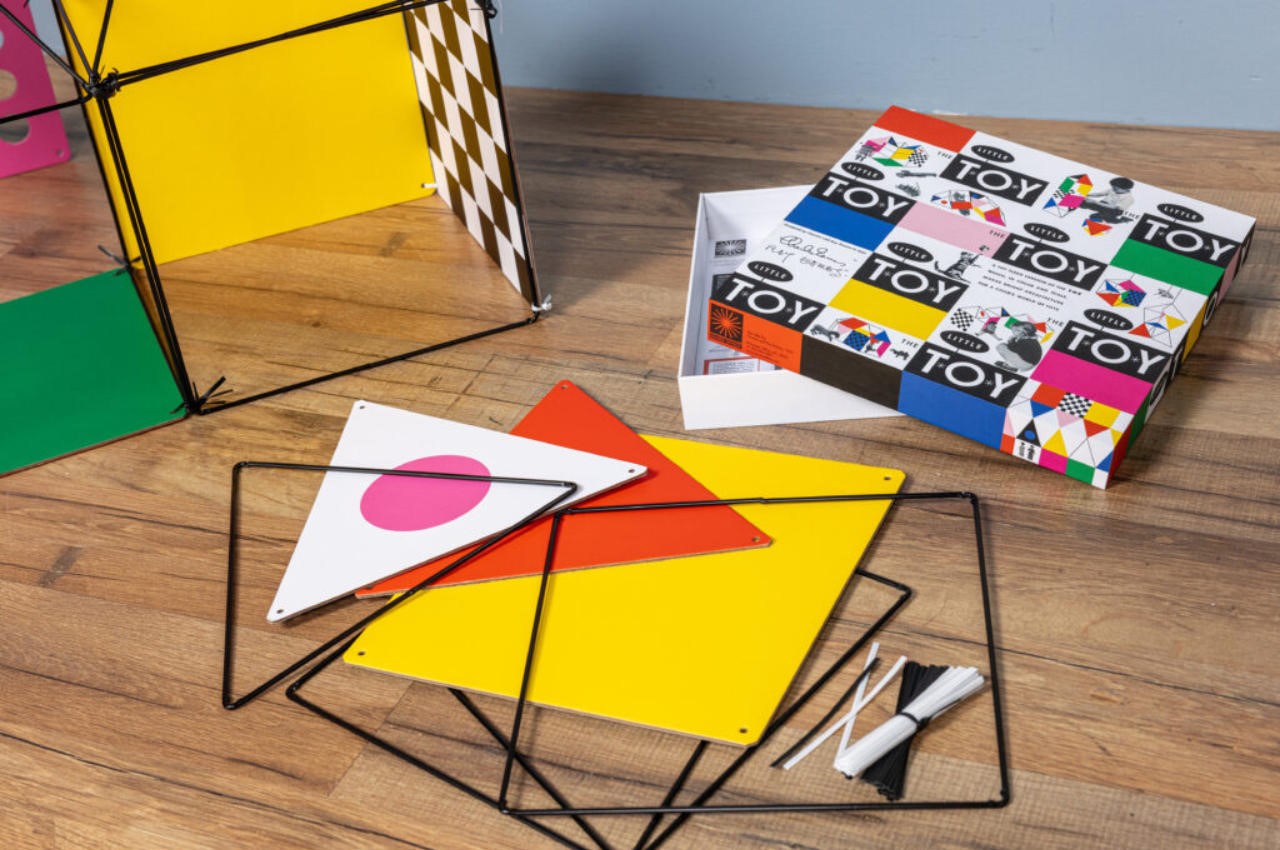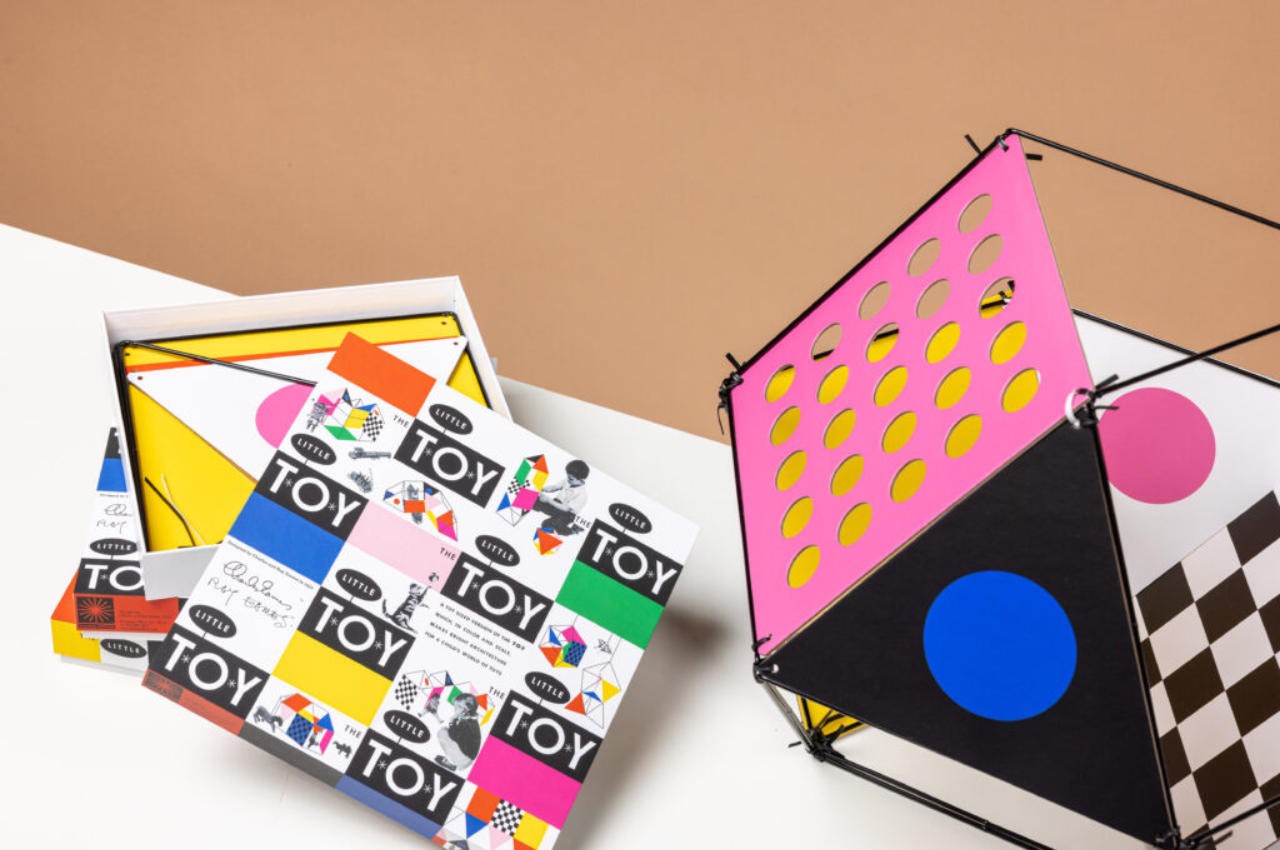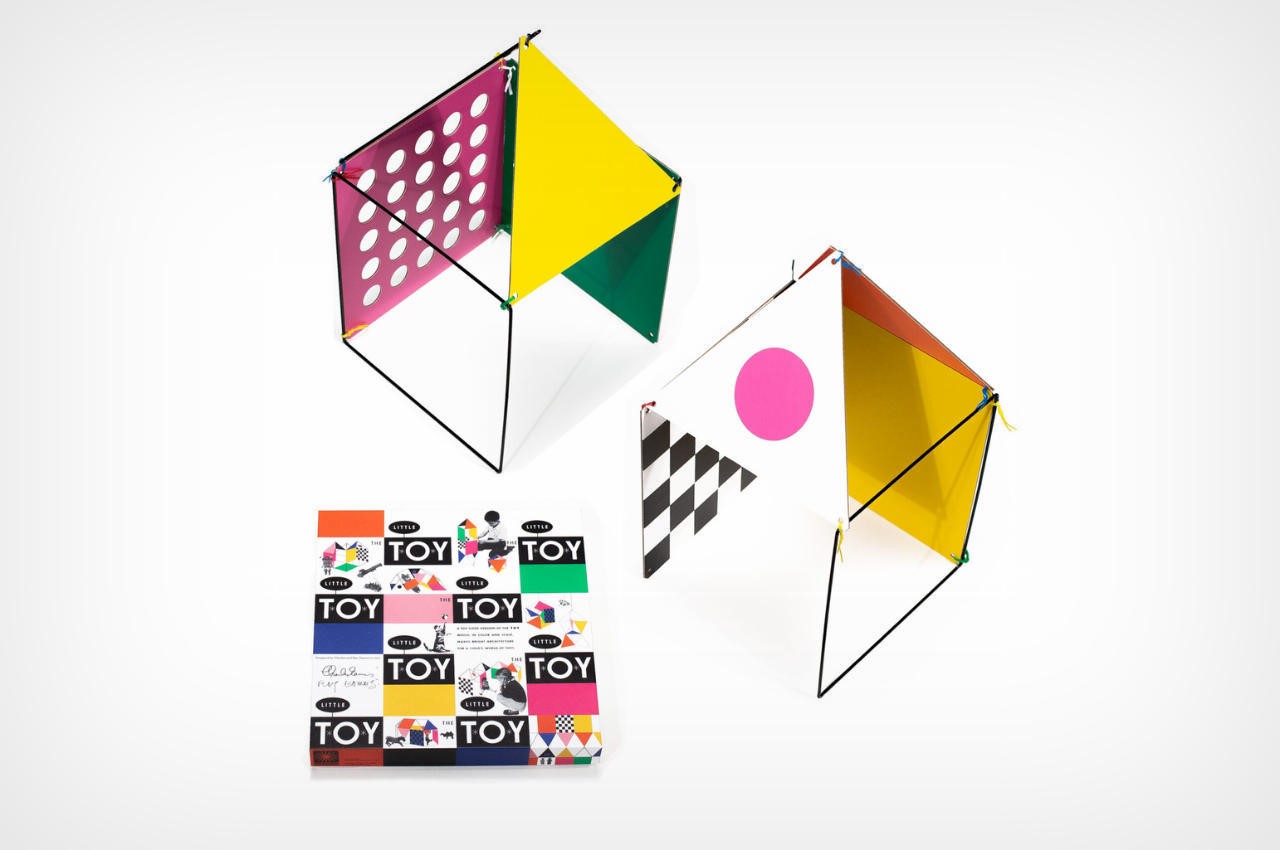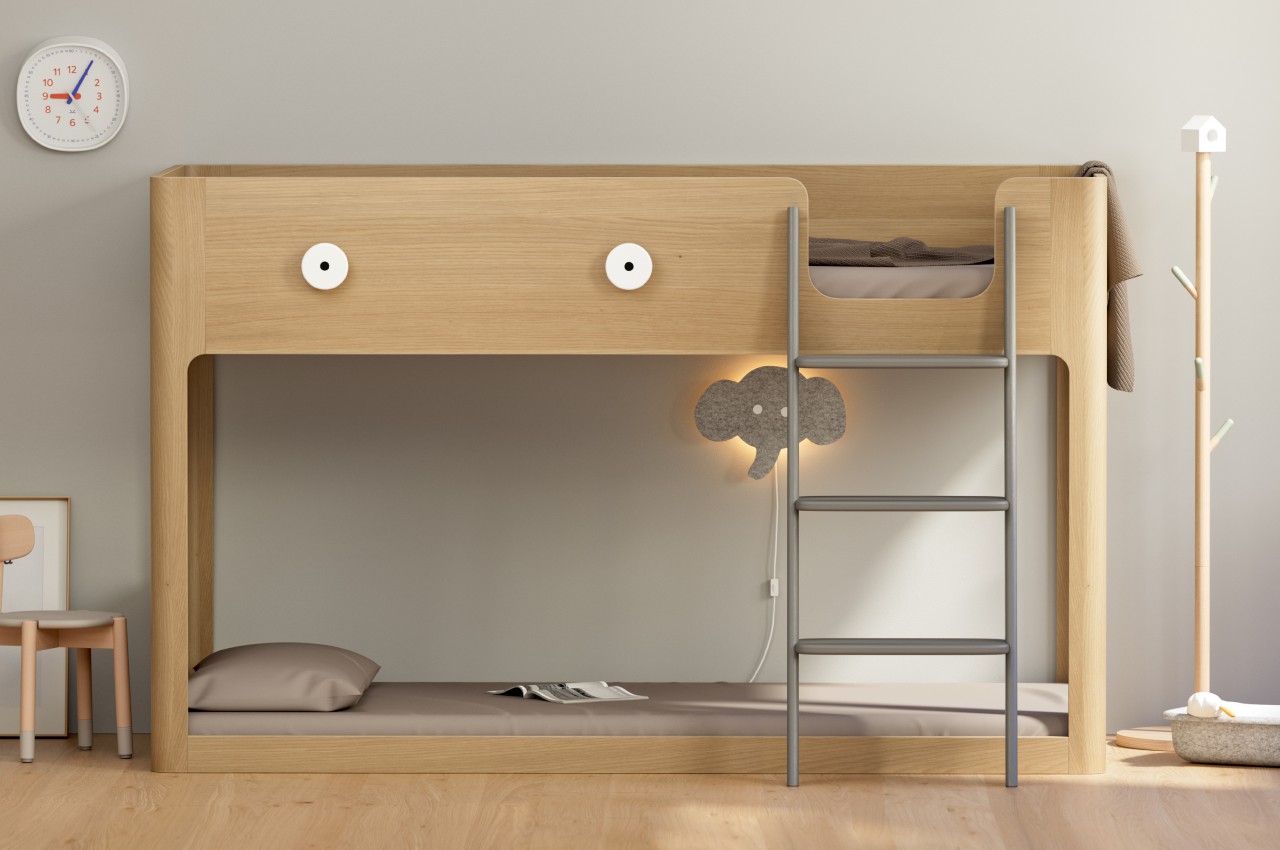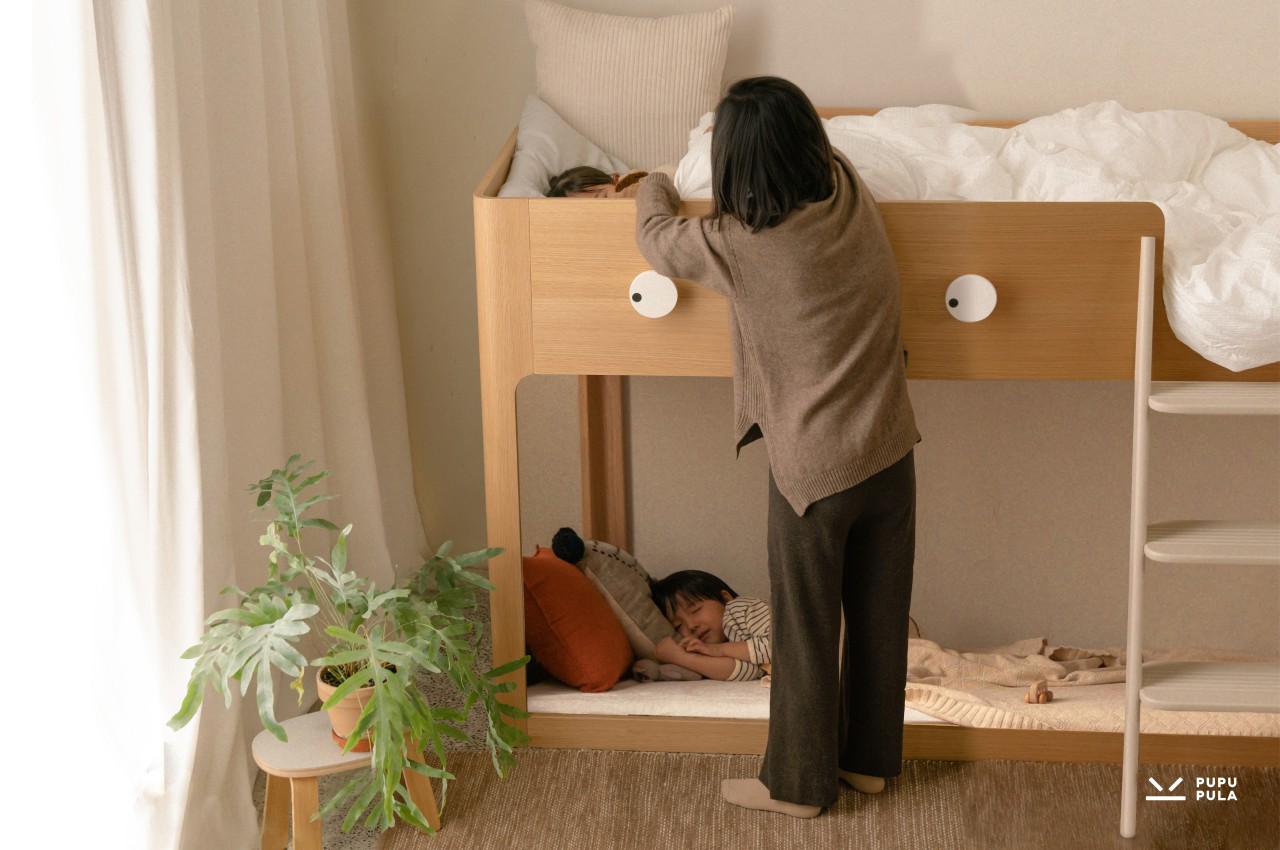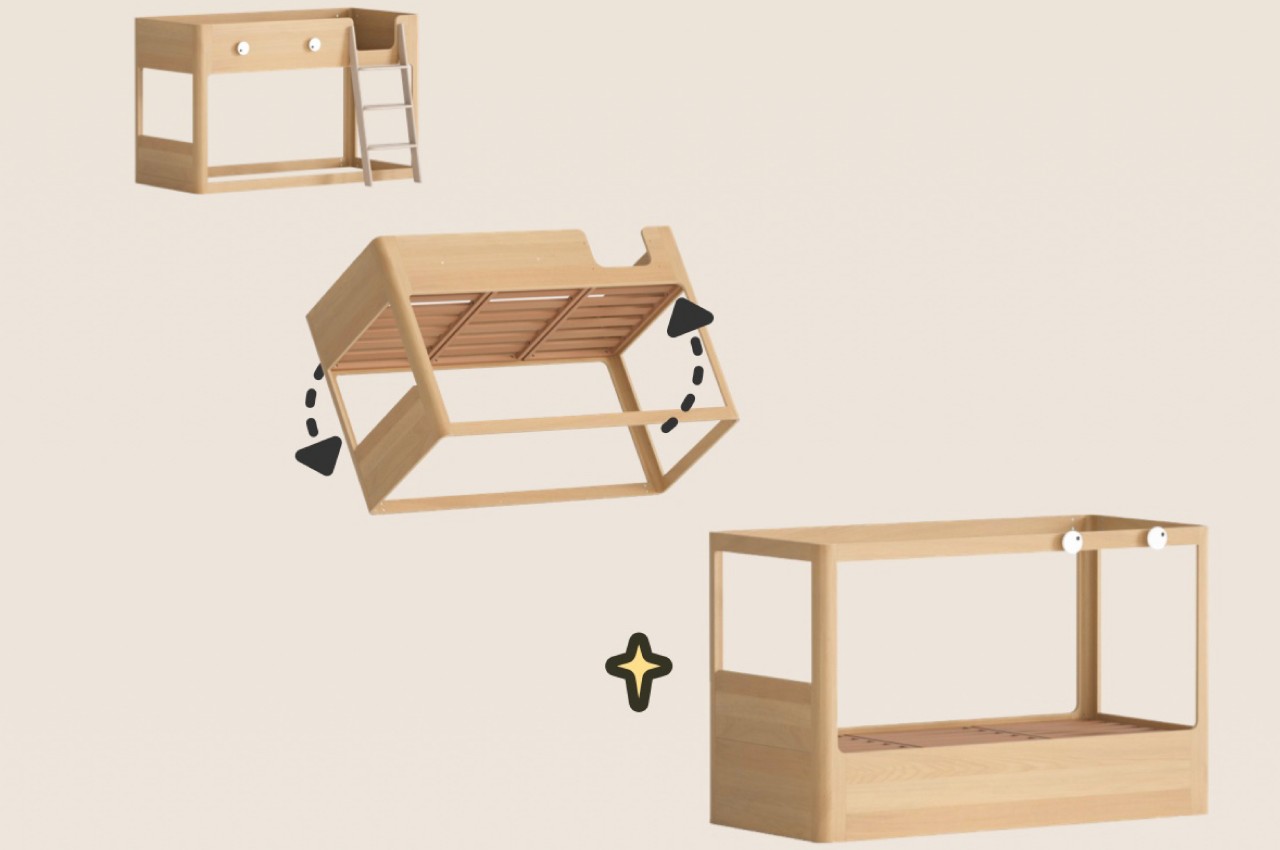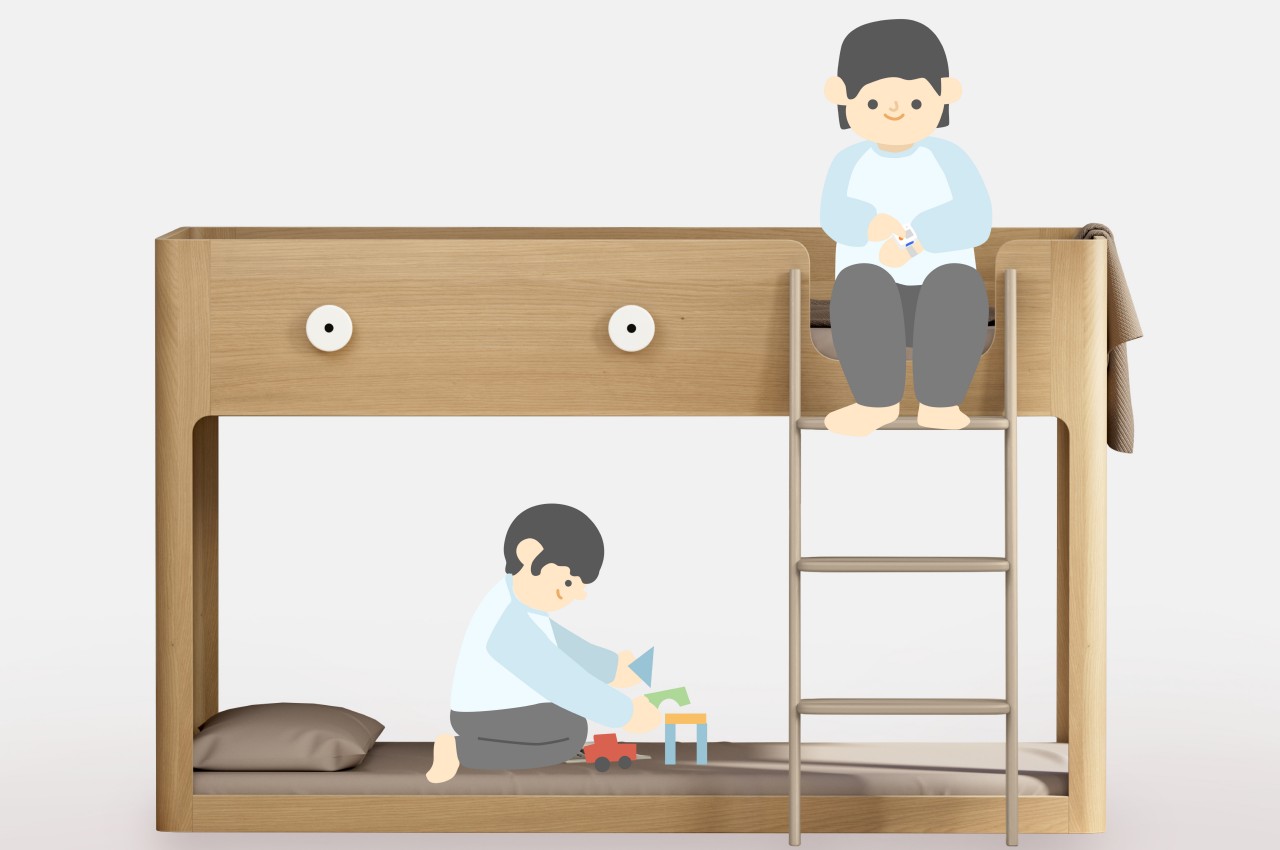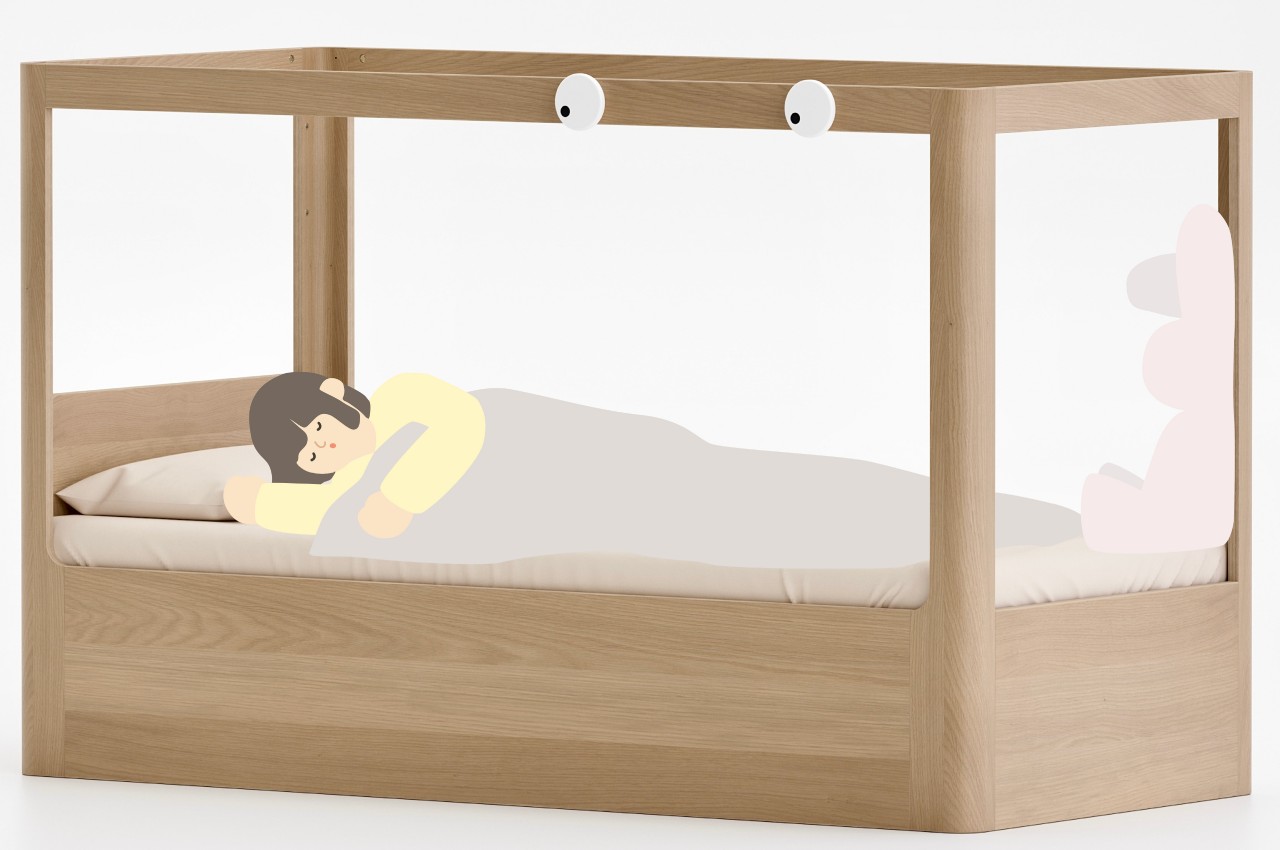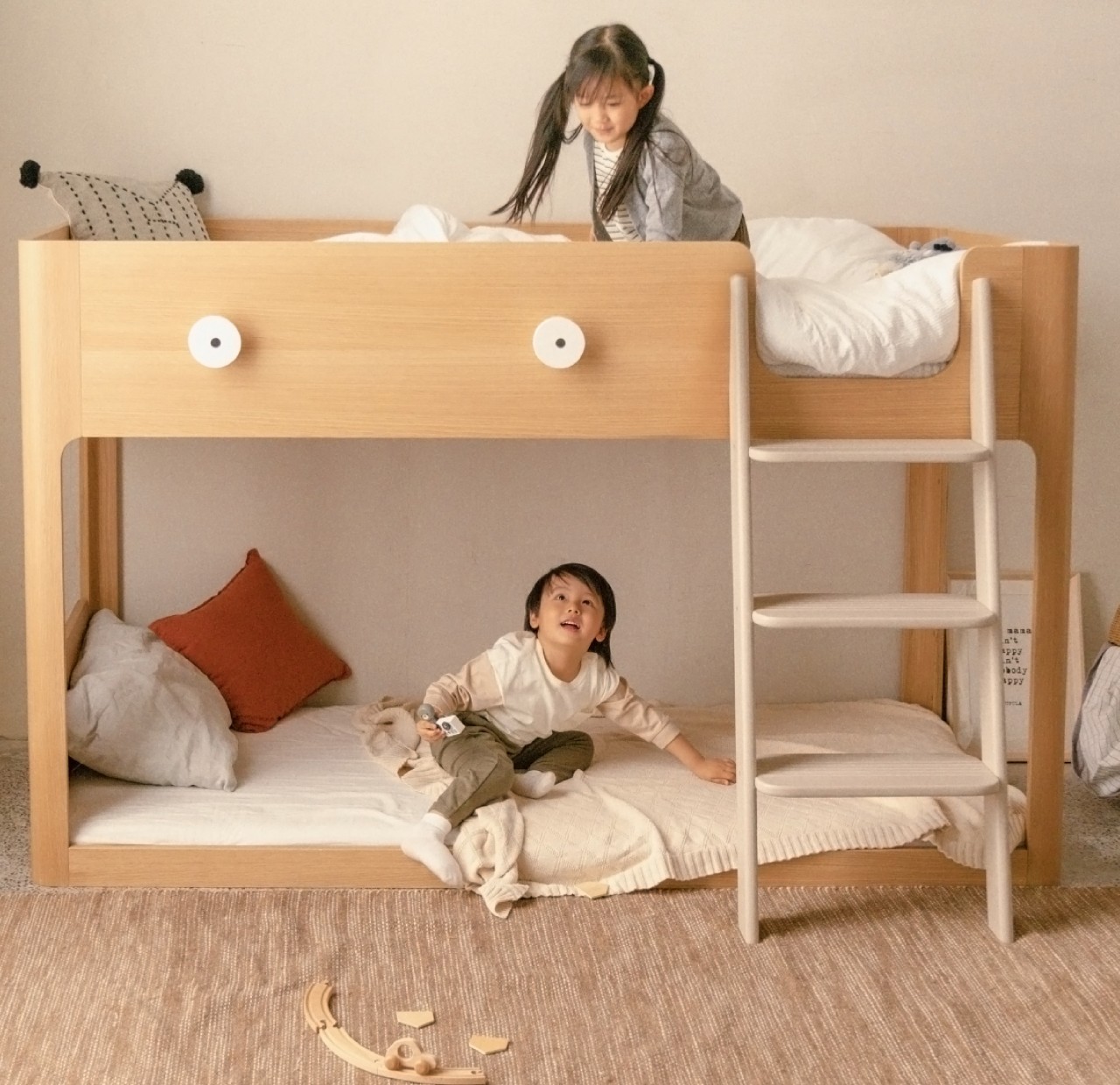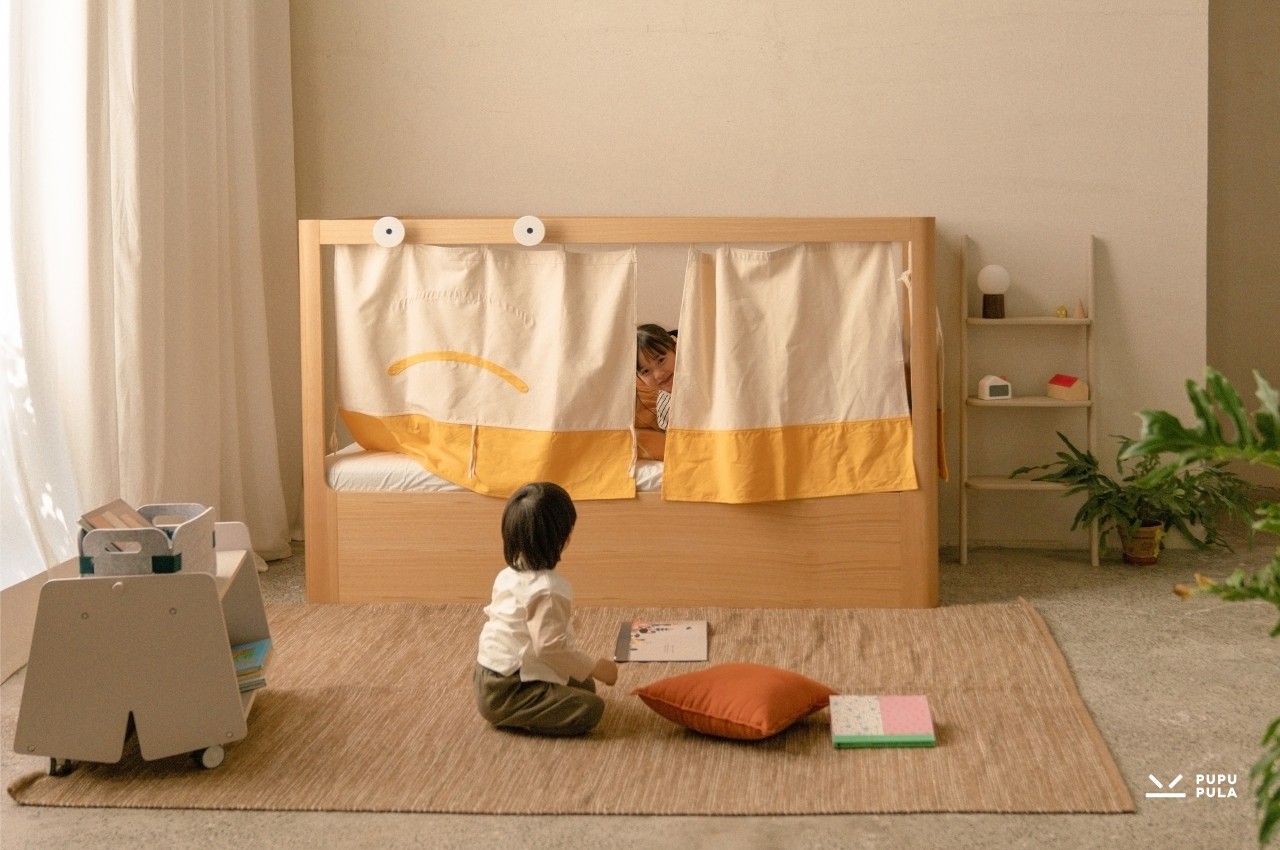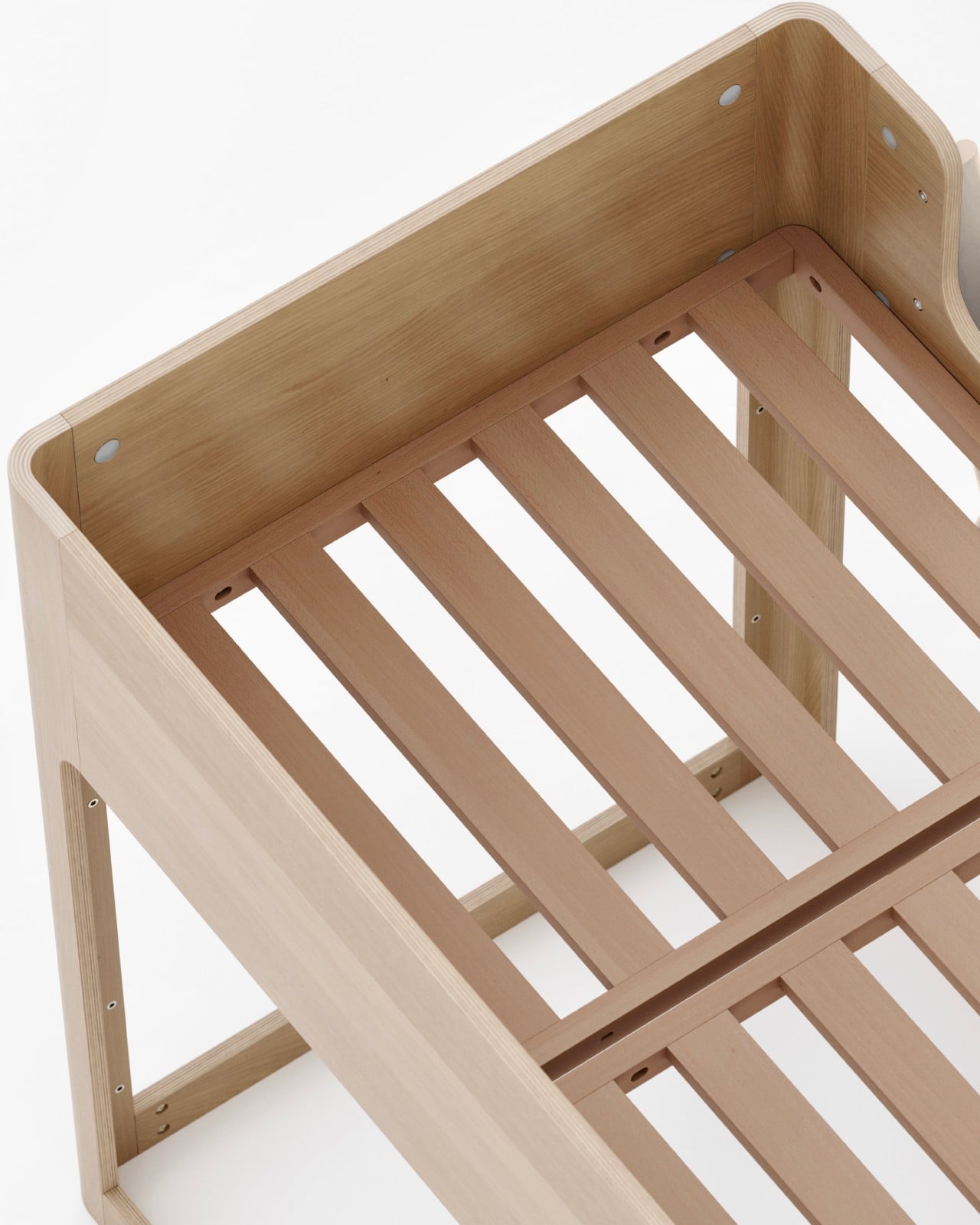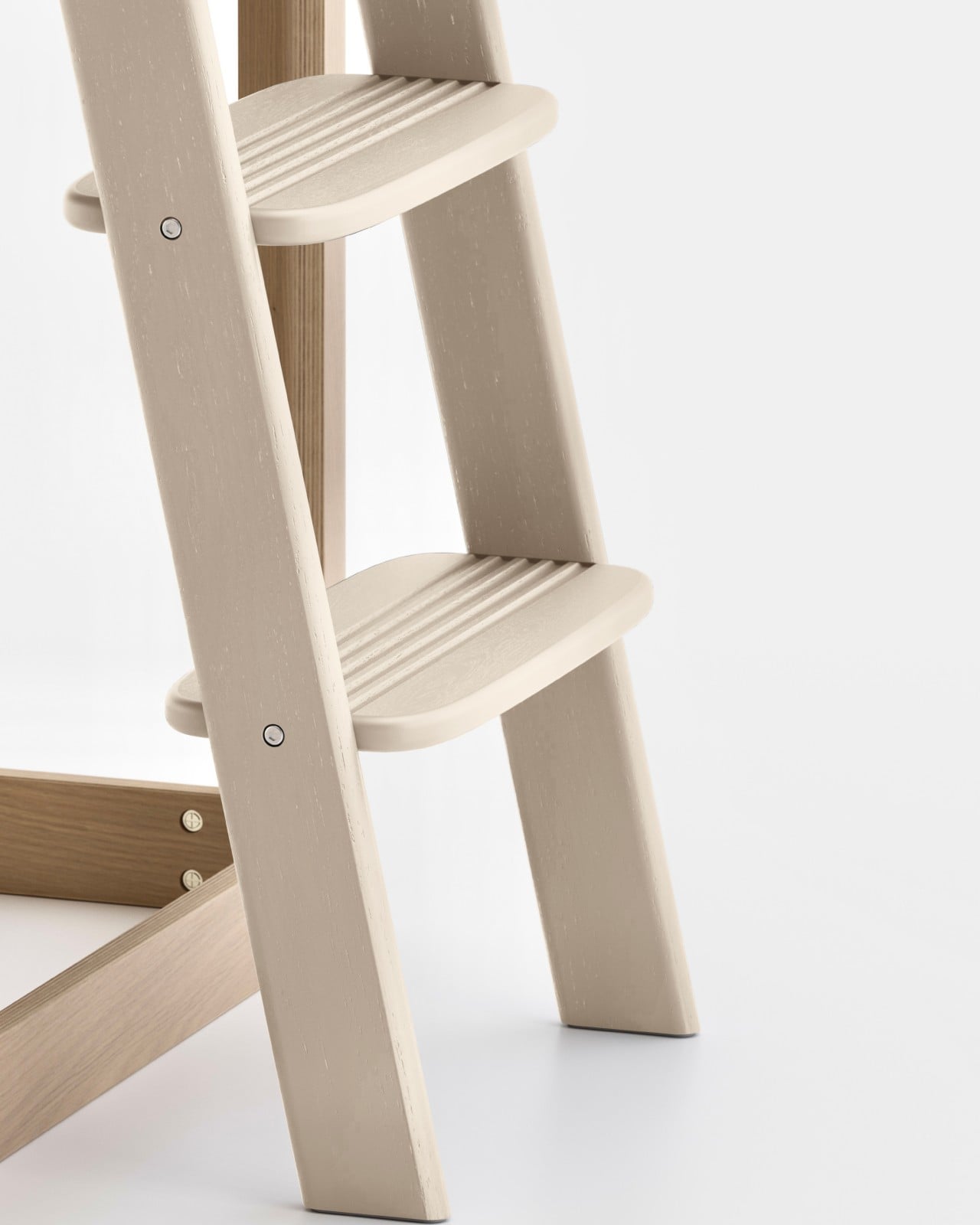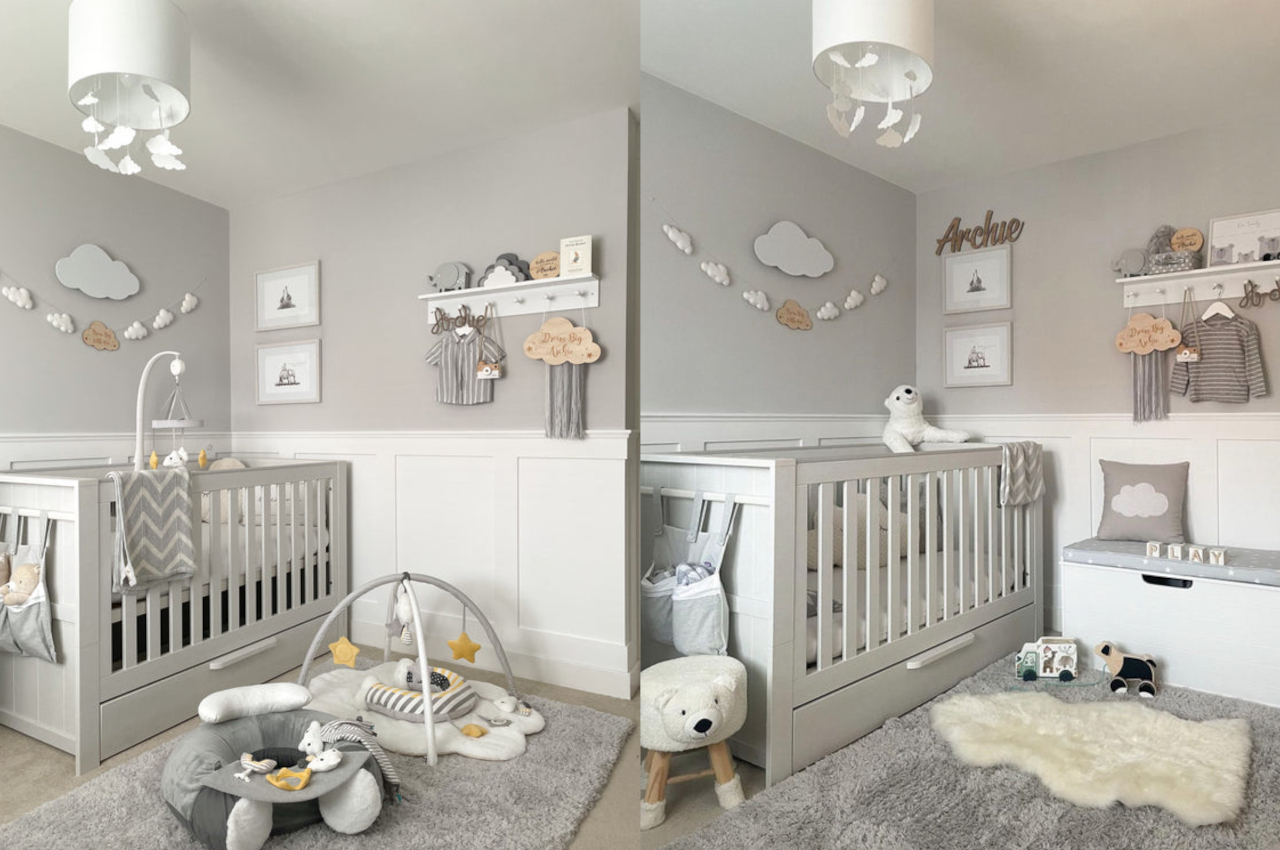
Creating a nursery can be an enjoyable process for expectant parents but anticipating the needs of a yet-to-arrive child is a daunting challenge. After all, it’s a place where you can unleash your inner child, exploring creative ideas, playful colors, and patterns. Figuring out where to start and what essentials to assemble before the baby comes home can be overwhelming.
Before designing the nursery, make sure that the nursery complements the overall decor of your home and can embrace various styles such as contemporary, minimalist, modern, or a blend of eclectic elements, much like any other room in the house. If you planning to create a nursery at home, here are tips to get you going.
Designer: Amanda Lewis
1. Assess the Space
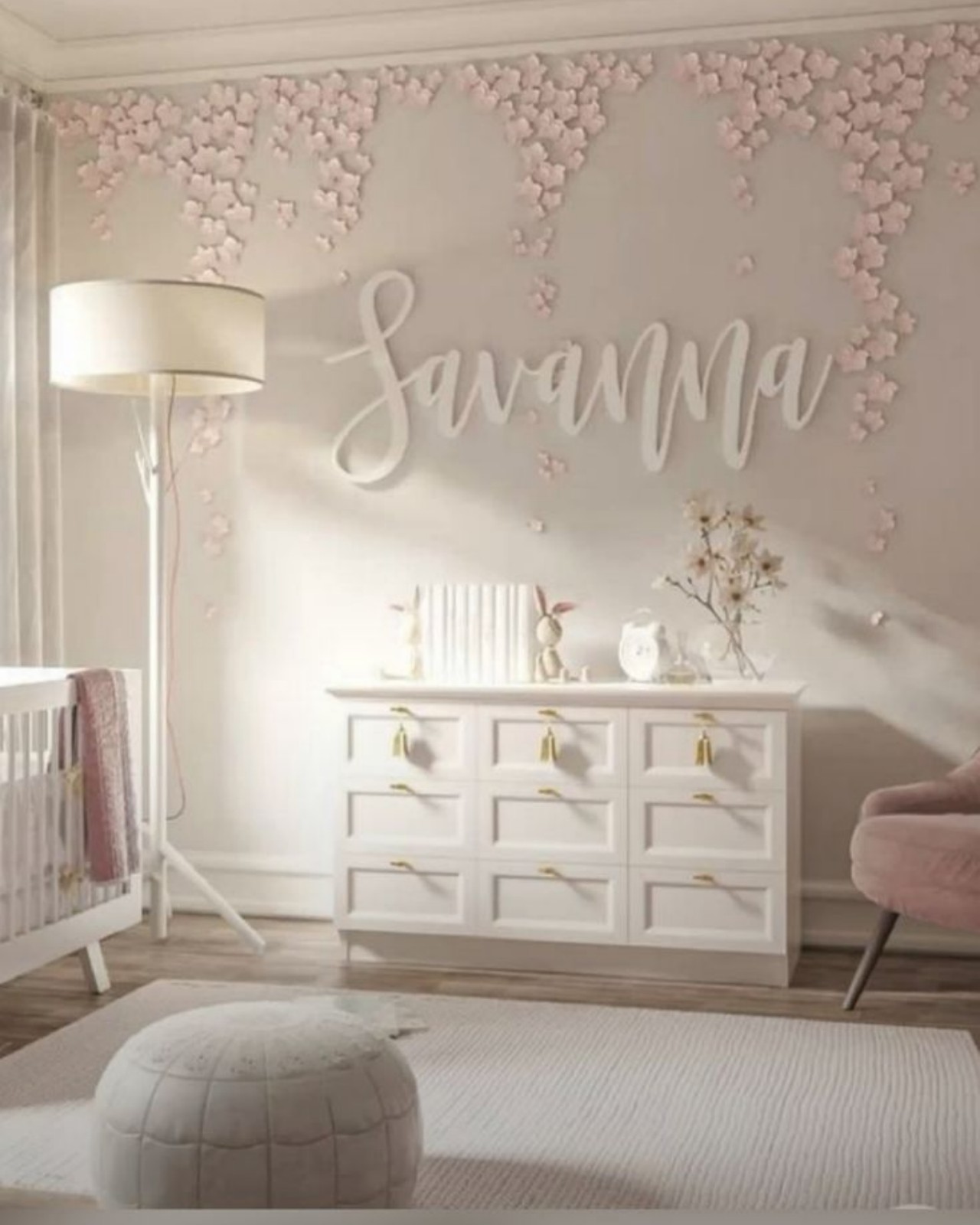
Begin by assessing the area where you plan to establish the nursery. Is it in proximity to your bedroom? Check the size of the room, the level of natural light it receives, notable features like niches, and the amount of available storage. Also, check whether the room will be shared with a sibling.
2. Design the Layout
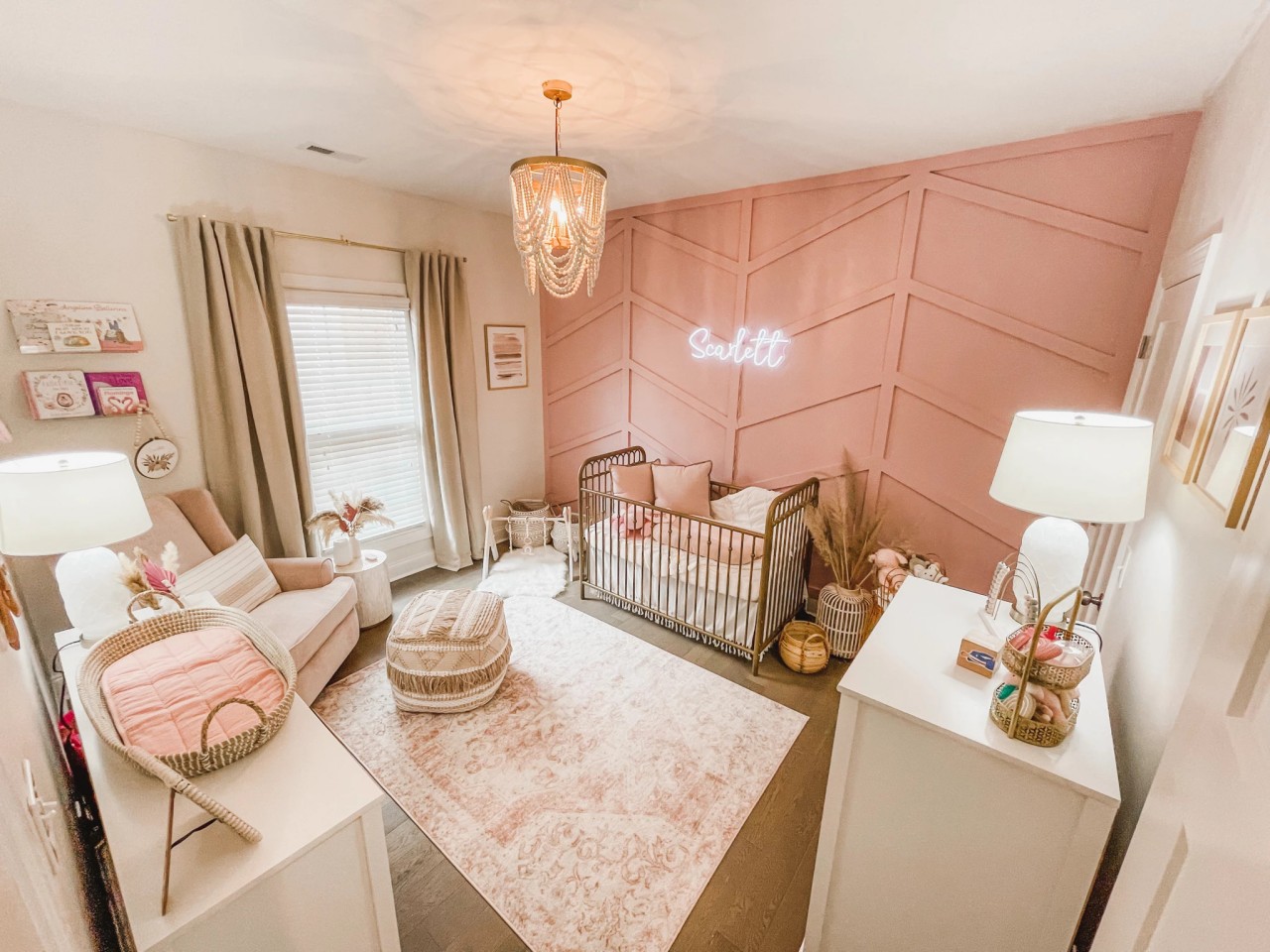
Designer: courkylynn
Create an efficient layout by dividing the nursery into sleeping, feeding, and diaper-changing zones. It is important to select the right furniture as baby furniture is available in various sizes and not every piece fits into every home. It is important to measure the space and check the dimensions of the furniture before purchasing it.
3. Make Space for Parents or Caregivers
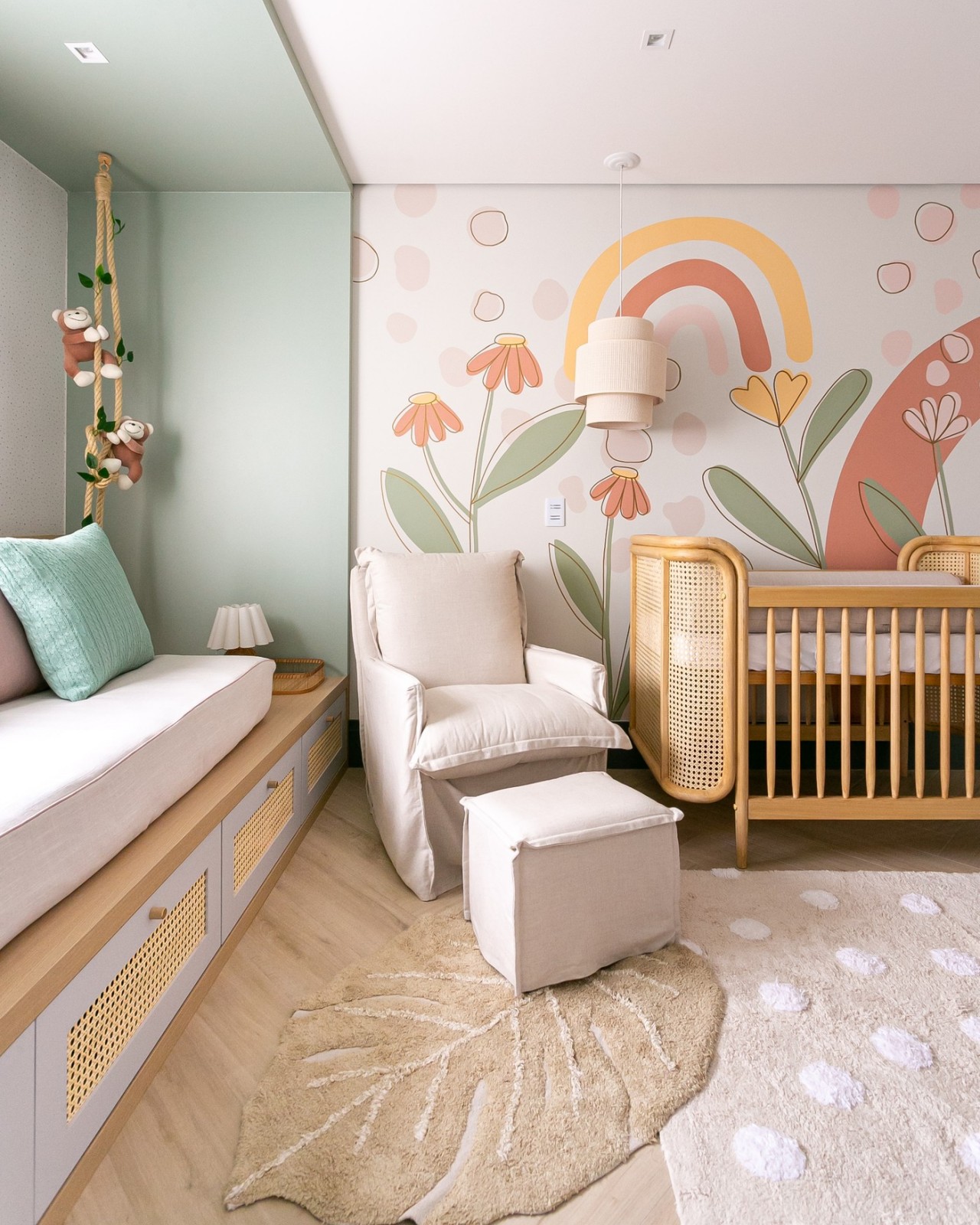
Designer: Rafaella Grasnoff
The nursery is not just for the baby but also the parents, as they will also be spending maximum time there. It is important to create an atmosphere that is not only pleasing for the baby but also soothing and relaxing atmosphere for the parents as they will be spending sleepless nights there. It is advisable to have a sofa bed to provide a comfortable space for the mom or a caregiver to rest during nap times.
4. Pick a Color Palette
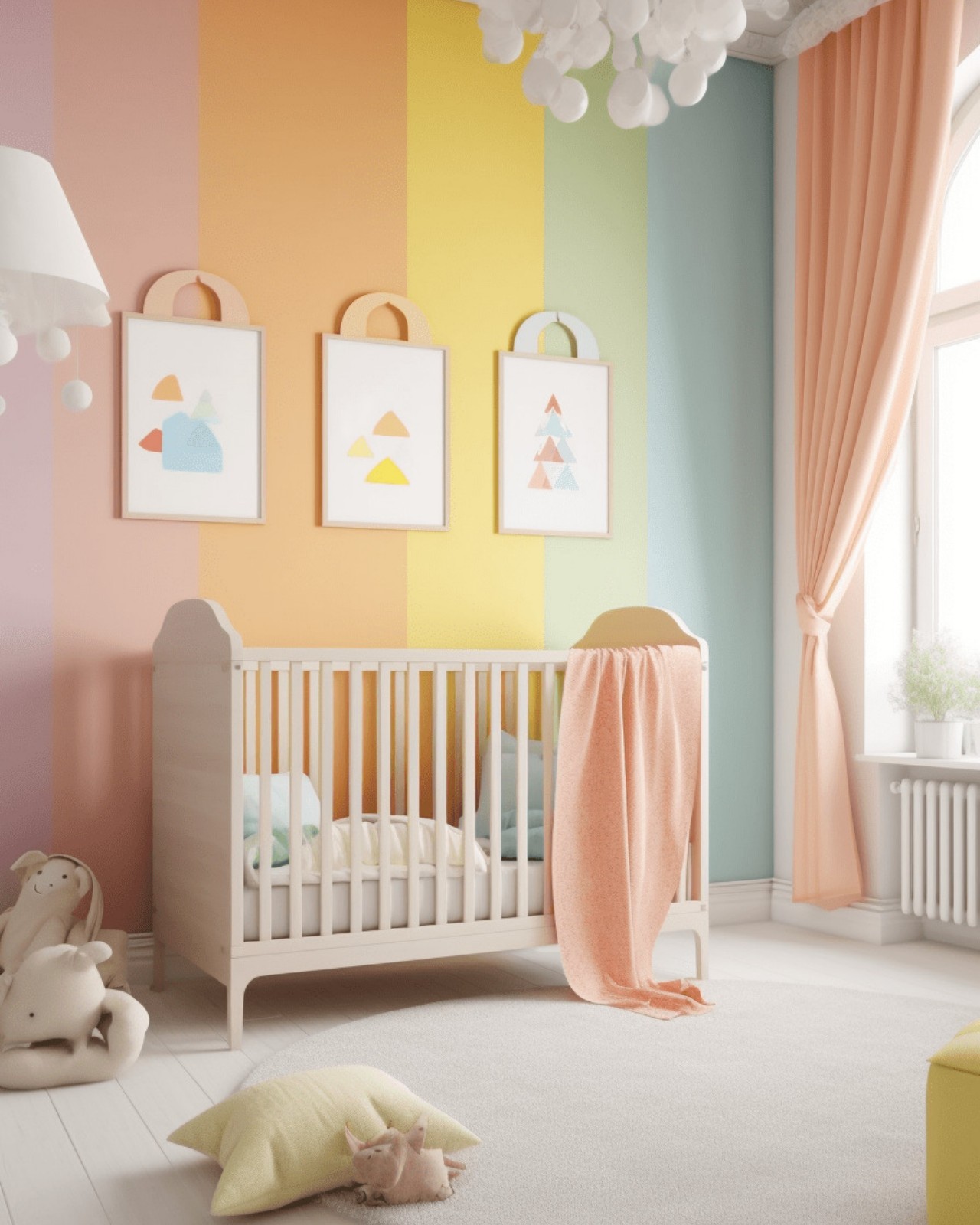
Go through some inspirational photos and choose a color palette for your baby’s nursery. Consider pastel colors like pale pink and soft yellow to create a warm and cozy atmosphere. Note that gender-neutral colors like grey, beige, and white can reflect light and create the illusion of more space. It is highly recommended to achieve a serene and understated atmosphere by adhering to a soft and minimal color palette.
5. Choose a Theme
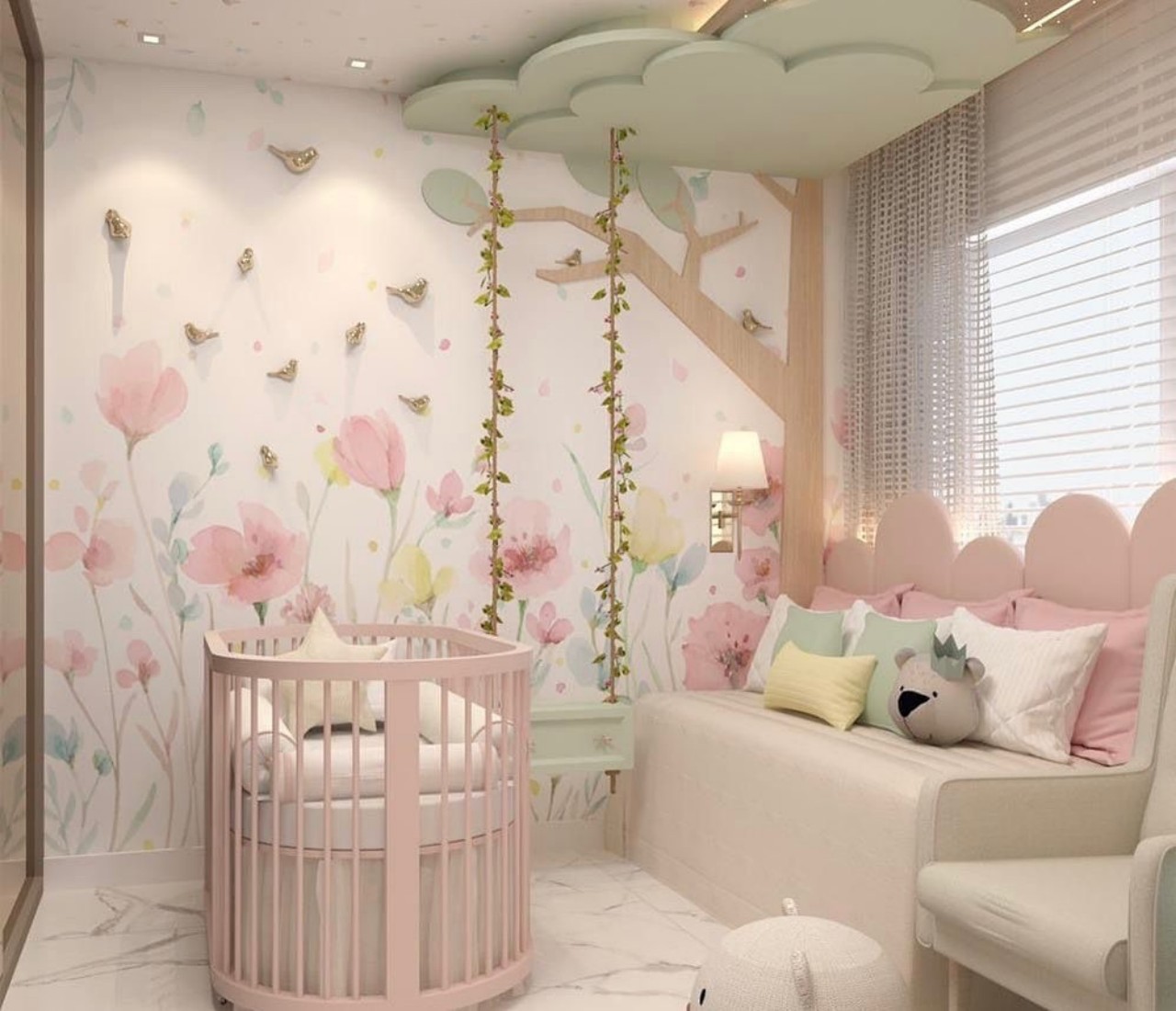
Designer: La Petite Bebê Boutique
Choose a theme for your baby’s room and consider options like butterflies, flowers, space, nursery rhymes, or animals are endless. Popular decor themes include baby animals, dinosaurs, cartoon characters, or nautical motifs. Opting for a neutral paint color paired with simple decor can create a room your child can ‘age into,’ saving money in the long run.
6. Go for Eco-Friendly Materials
Prioritize your baby’s health over aesthetics and avoid purchasing attractive furniture made from PVC or opting for paint colors with high VOC levels. Note that many new products, including paint, flooring, and furniture, contain harmful toxins.
7. Soft Furnishing
Decorate the space with soft textures and easy-to-maintain natural materials. Opt for a durable, washable rug like wool or short-pile carpet to add flair to the room, providing cushioning for your little one while avoiding potential choking hazards.
8. Add Visual Interest
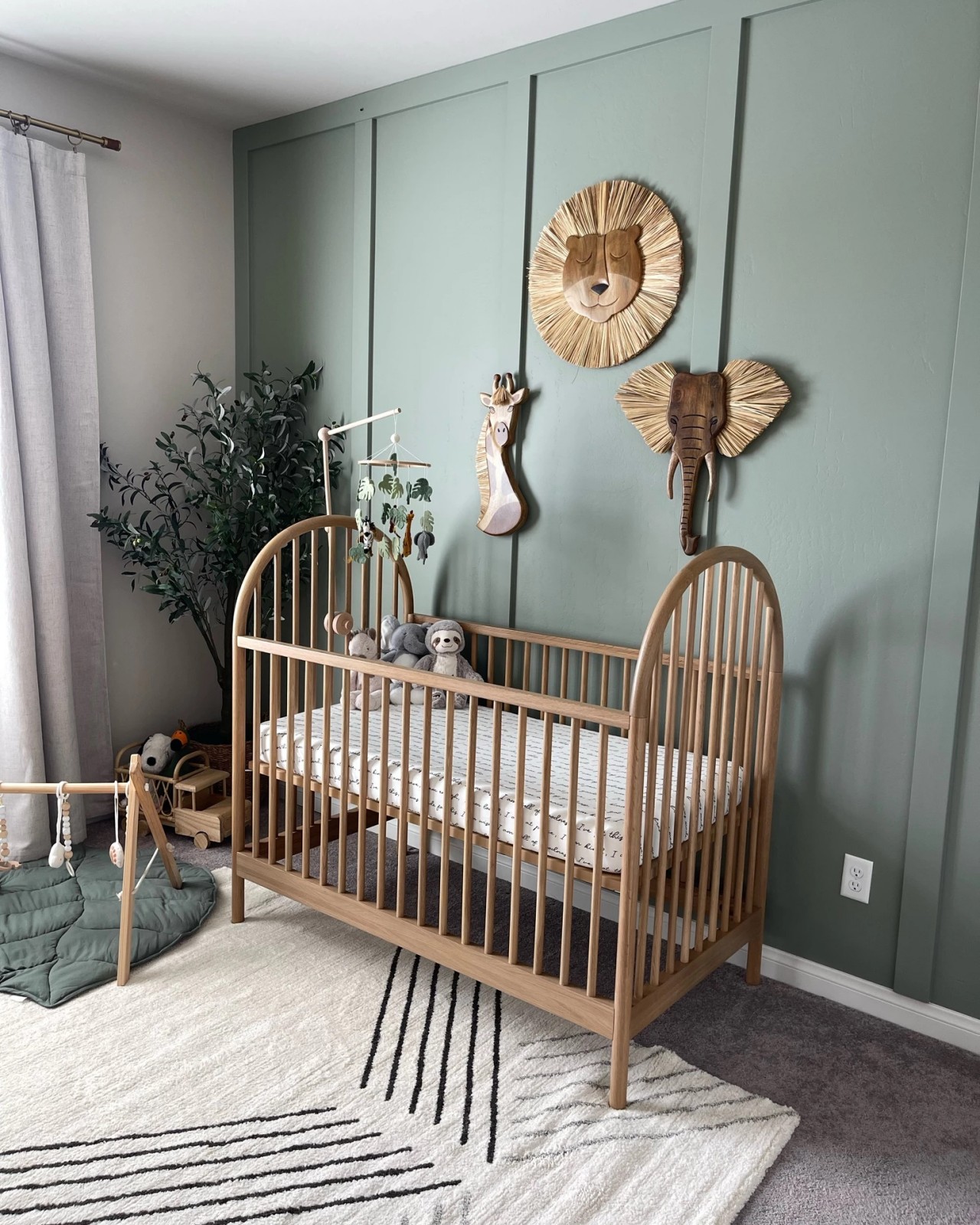
Designer: bohobraidteacher
Create visual interest in your nursery by incorporating a wallpaper accent wall, providing an opportunity to elevate the room’s appearance and explore various textures and prints. You can also apply wallpaper to the ceiling to introduce a playful element without overwhelming the space, considering that babies spend a lot of time on their backs. If you do not want to commit, opt for removable wallpaper or wall stickers that can be changed as the baby grows.
9. Lighting
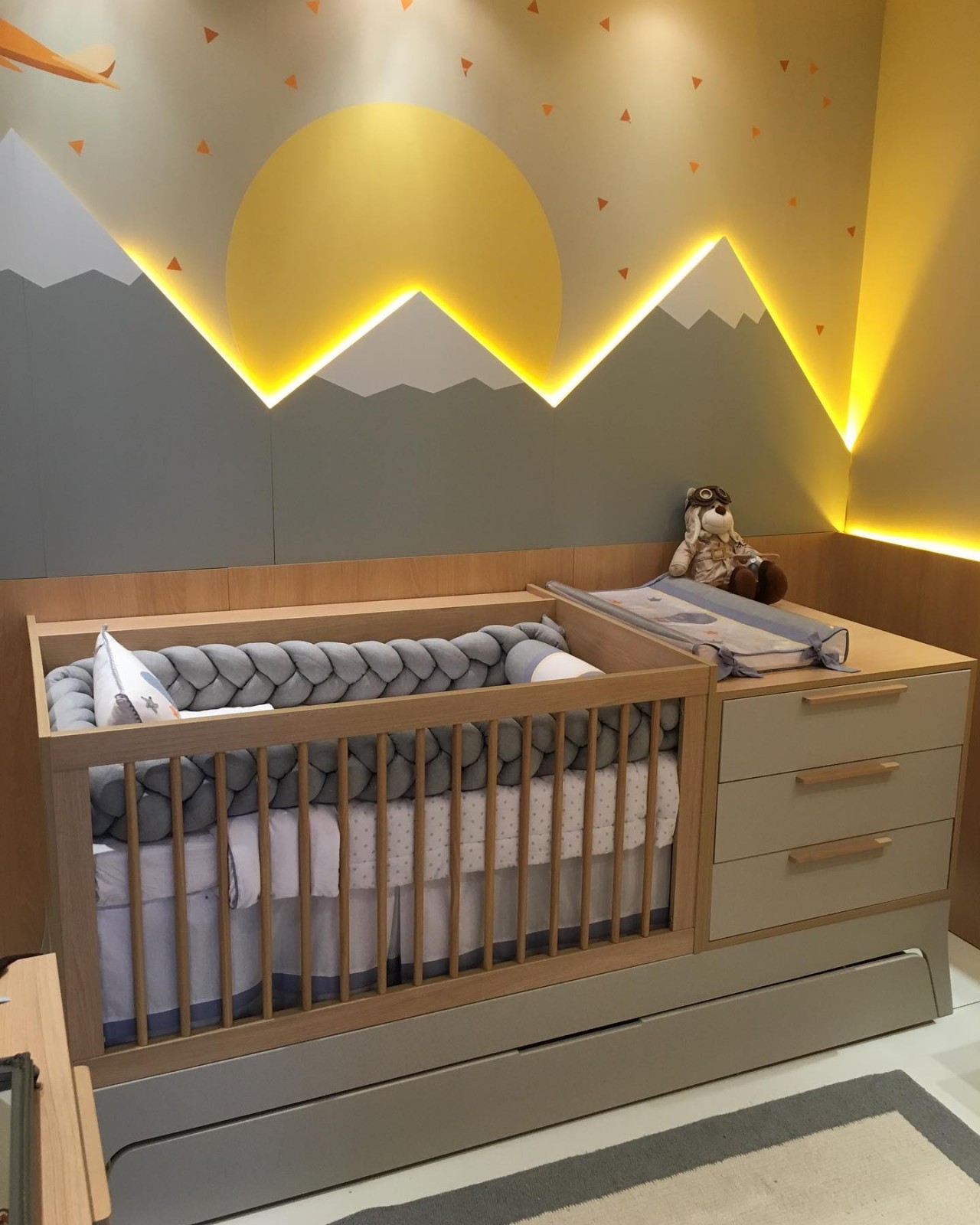
Designer: Bebê Casa
Incorporate various lighting elements as nursery lighting plays a vital role, with ceiling lights, floor lamps, and adjustable table lamps being essential options to have distributed throughout the room.
10. Window Treatment
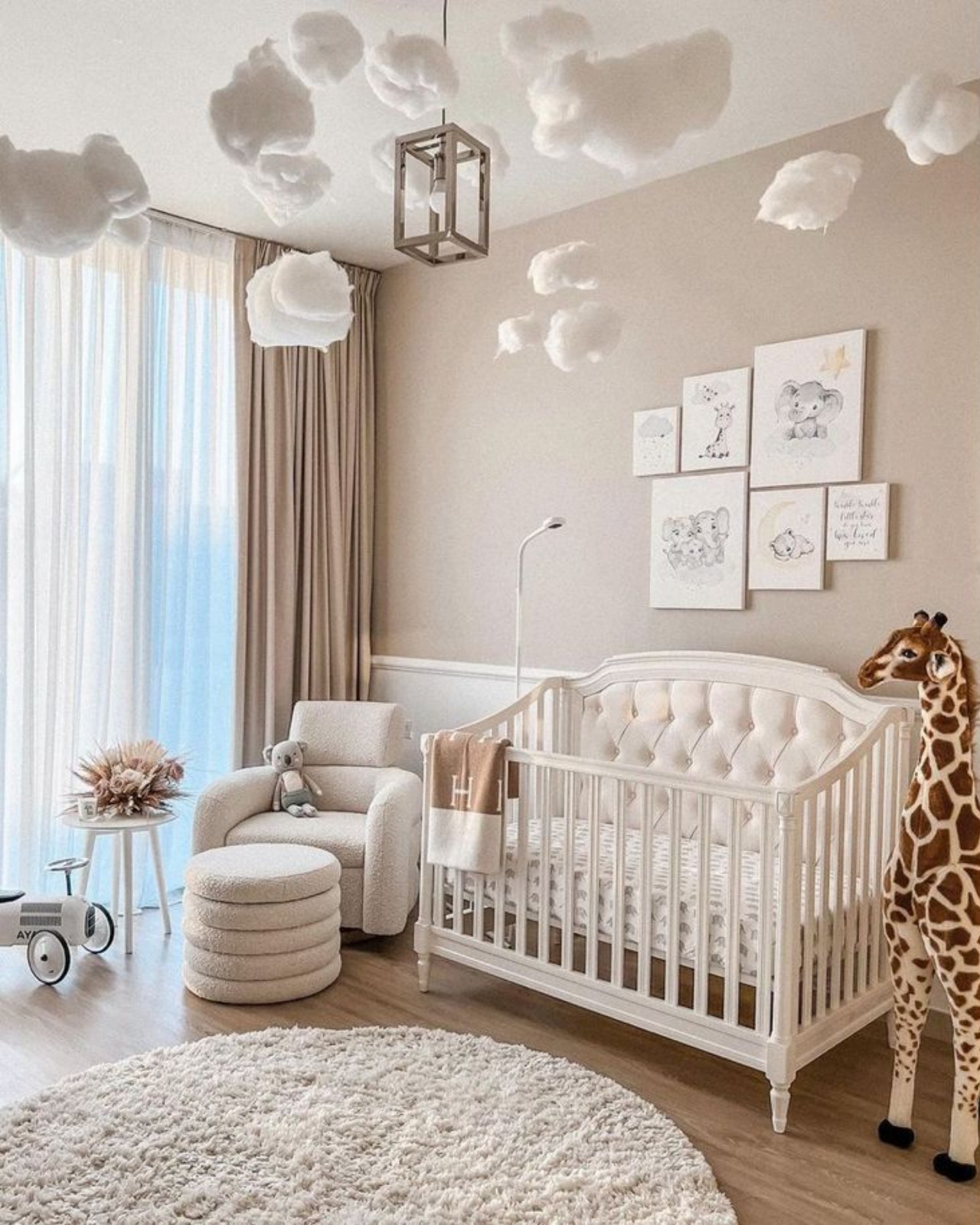
Designer: Cozy Nursery
Select window treatments like blinds, shades, or curtains with blackout features to ensure essential darkness in the nursery for optimal baby sleep. This will manage the level of light entering the nursery and help maintain a regulated temperature in the space.
11. Add Functional Storage
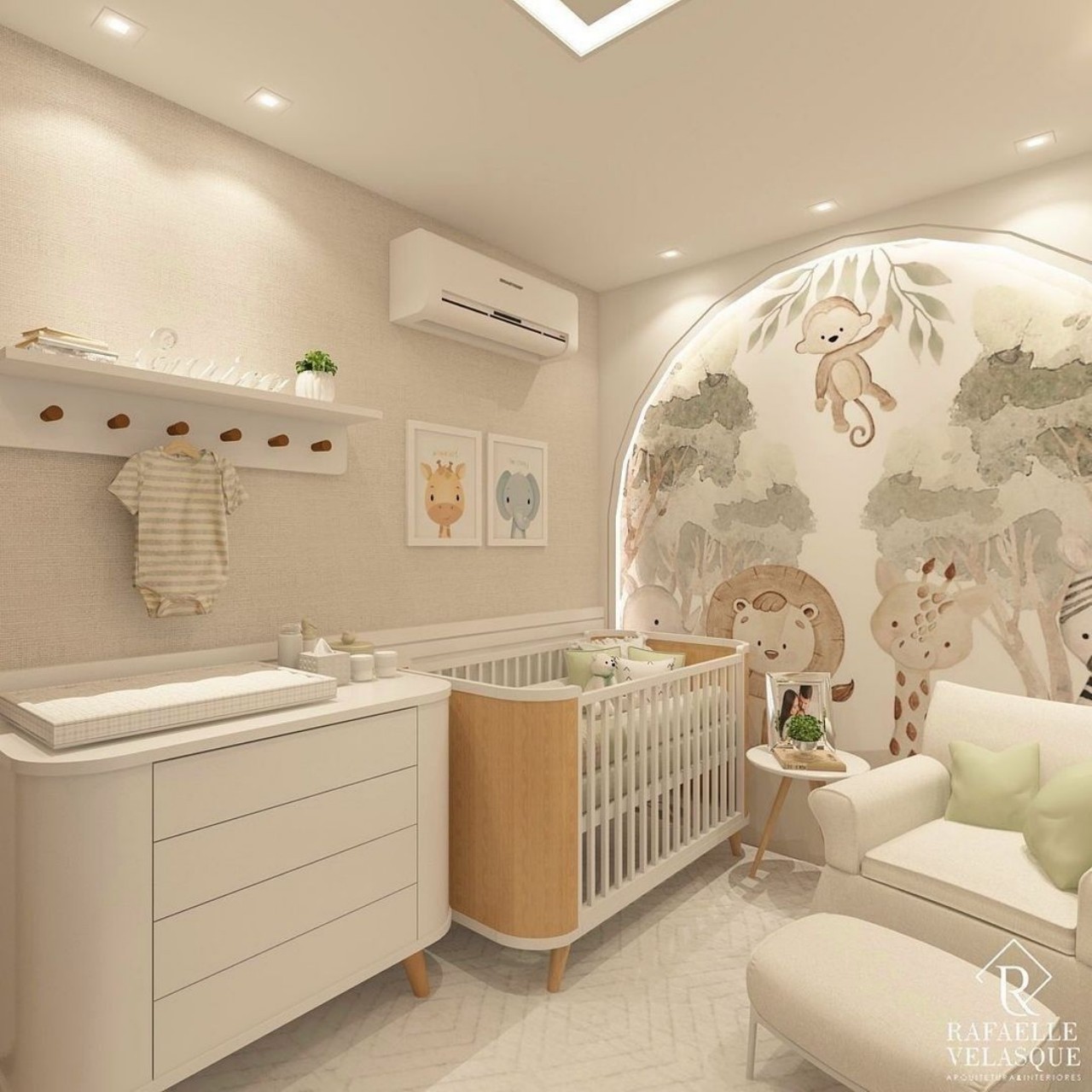
Designer: Rafaella Velasque
Opt for attractive and functional baskets in cute animal designs like elephants, lions, or bears to add texture to your nursery design while serving as storage for diapers, sheets, toys, and other items.
12. Beautify with Plants
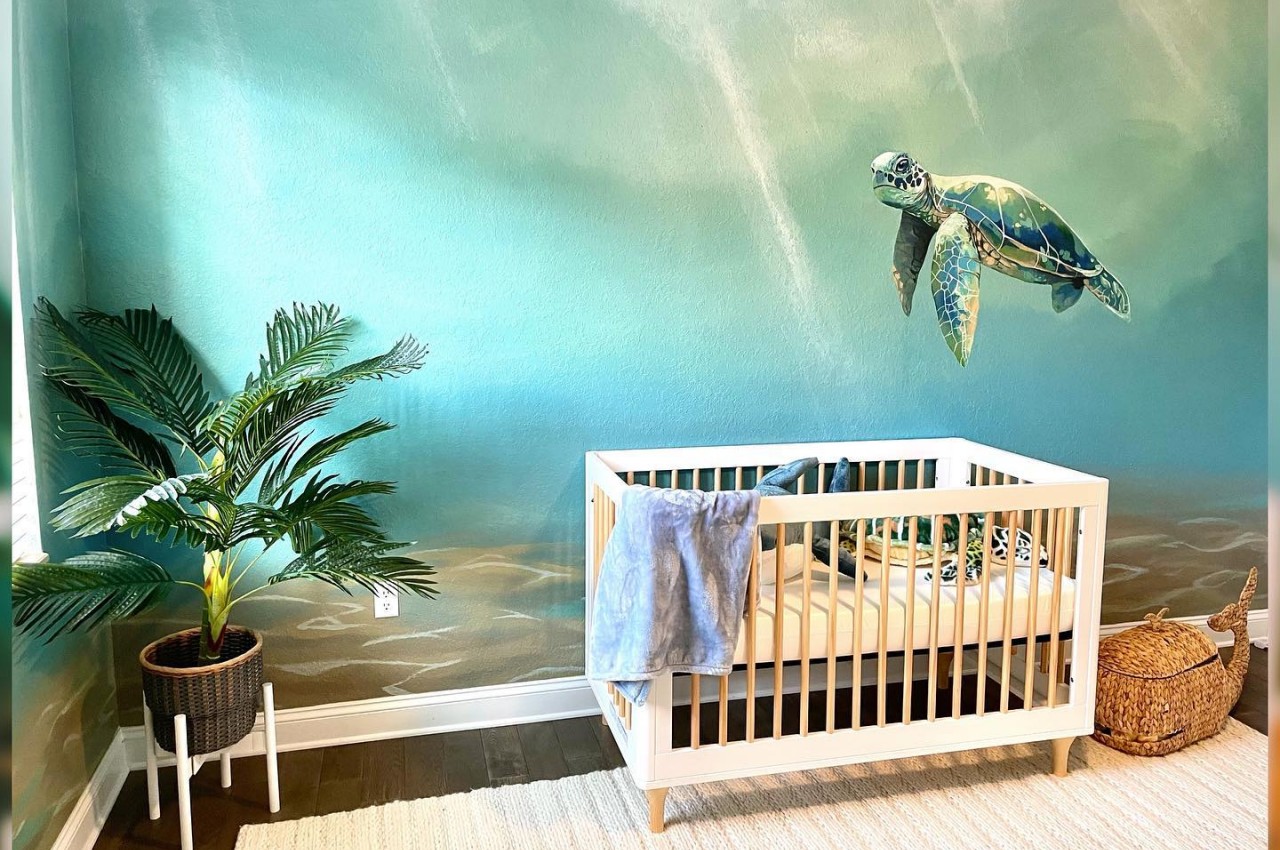
Designer: Tracy Danet
In nurseries, incorporating houseplants can contribute to air purification, with non-toxic plants not only promoting clean air but also fostering a serene ambiance.
13. Soft Toys
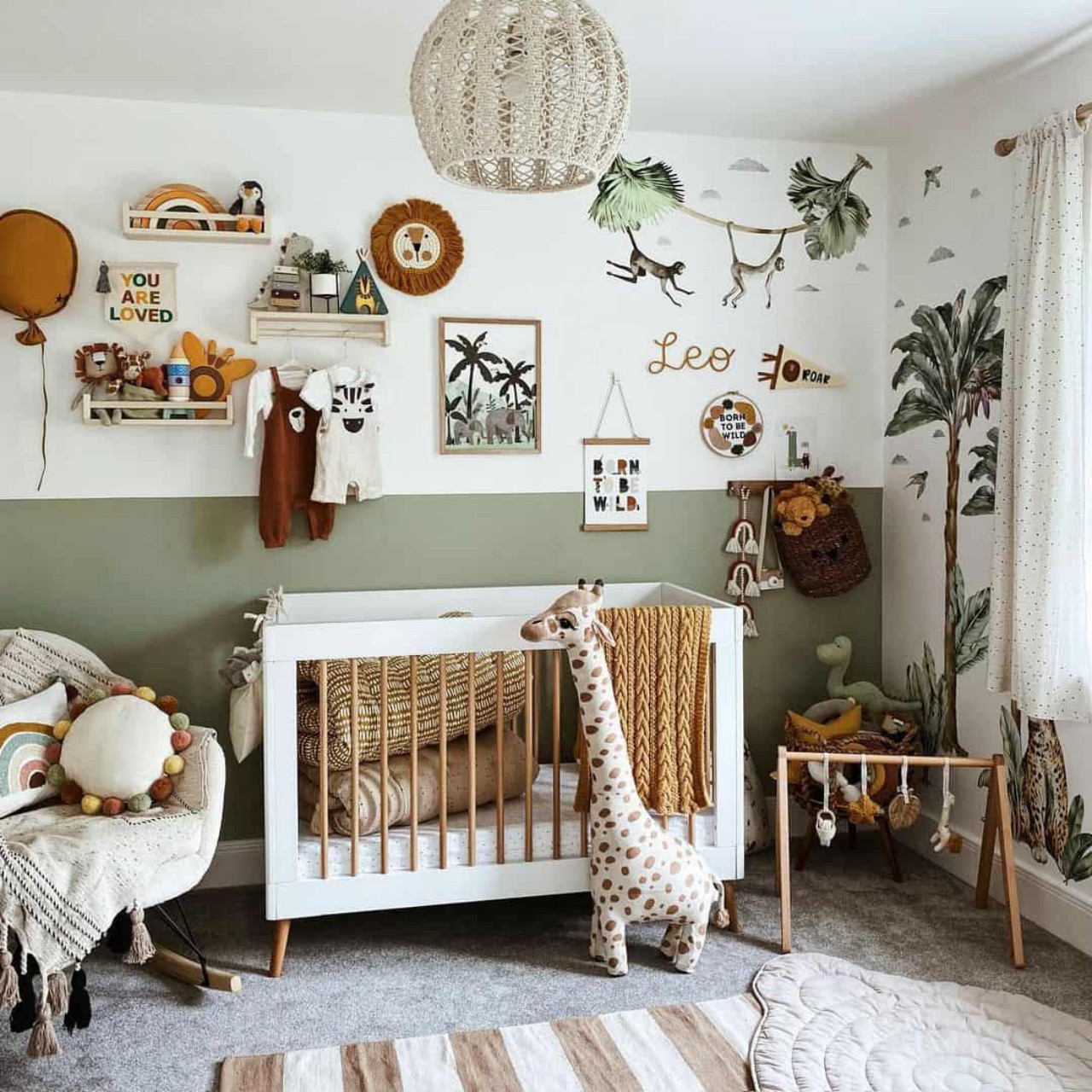
Designer: Nadine
The nursery will be incomplete with soft toys so utilize stuffed animals as decorative accents that also entertain babies during diaper changes.
14. Storage Solutions
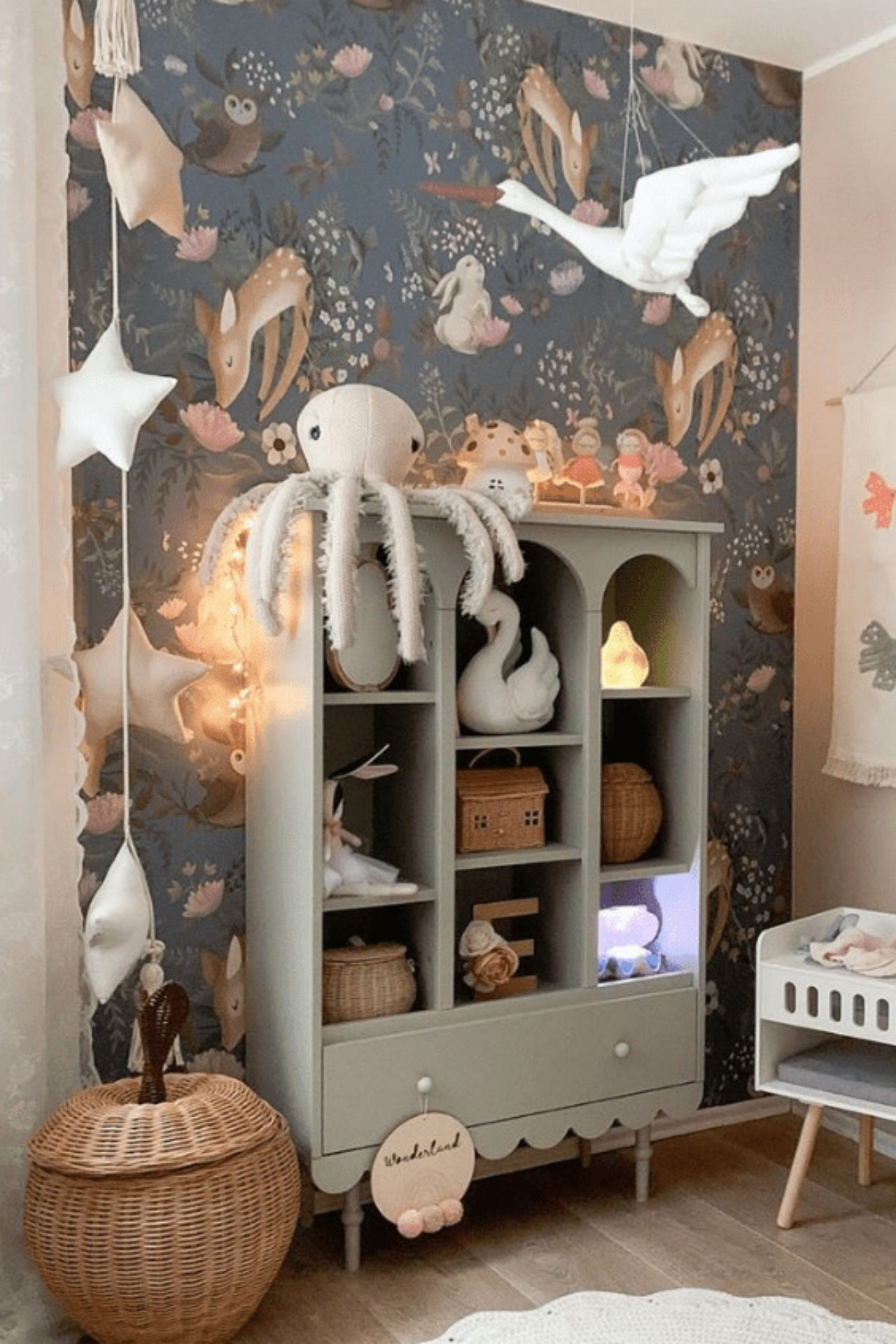
Designer: Scandi Nursery Decor & Toys
Irrespective of your space’s square footage, maintaining organization while preserving style can be challenging. Effective nursery storage is a game-changer so explore storage concepts such as cubbies, shelving, bookcases, and toy boxes.
15. Add a Personal Touch
Bring personal elements into the nursery to craft a space that resonates with your preferences. Contemplate incorporating family photos and cherished heirlooms to add a special and meaningful touch to the environment.
16. Assess the Costs
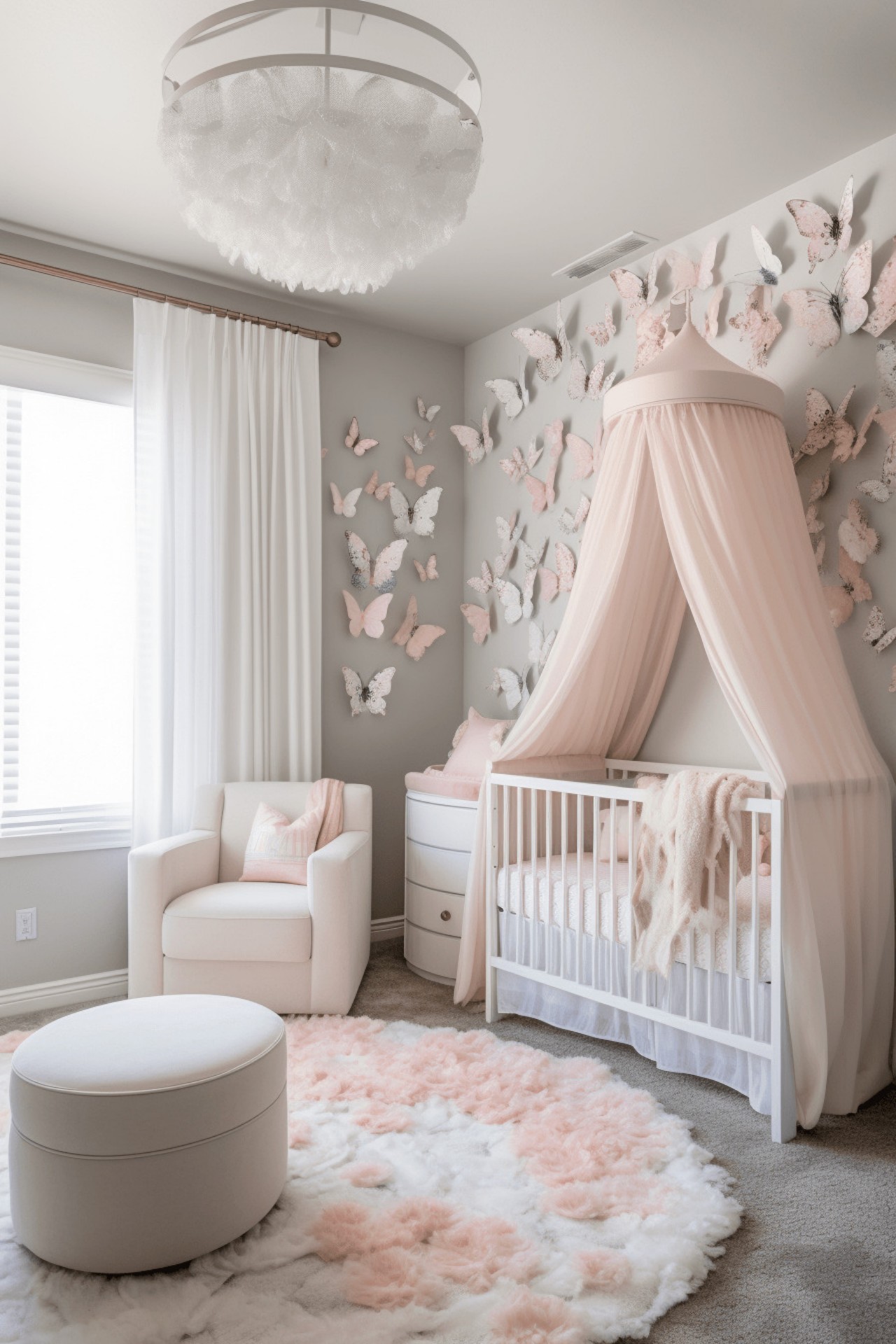
Planning the design of a nursery is a financial commitment, hence it is advisable to determine your budget for the nursery design before formulating the design plan.
What are the Nursery Furniture Essentials?
When buying nursery furniture, prioritize safety by securely anchoring furniture and safely tucking away cords. Opt for durable, eco-friendly, non-toxic furniture that is responsibly made. Choose materials that are easy to clean and maintain for a more compact and manageable nursery setup.
• The Crib
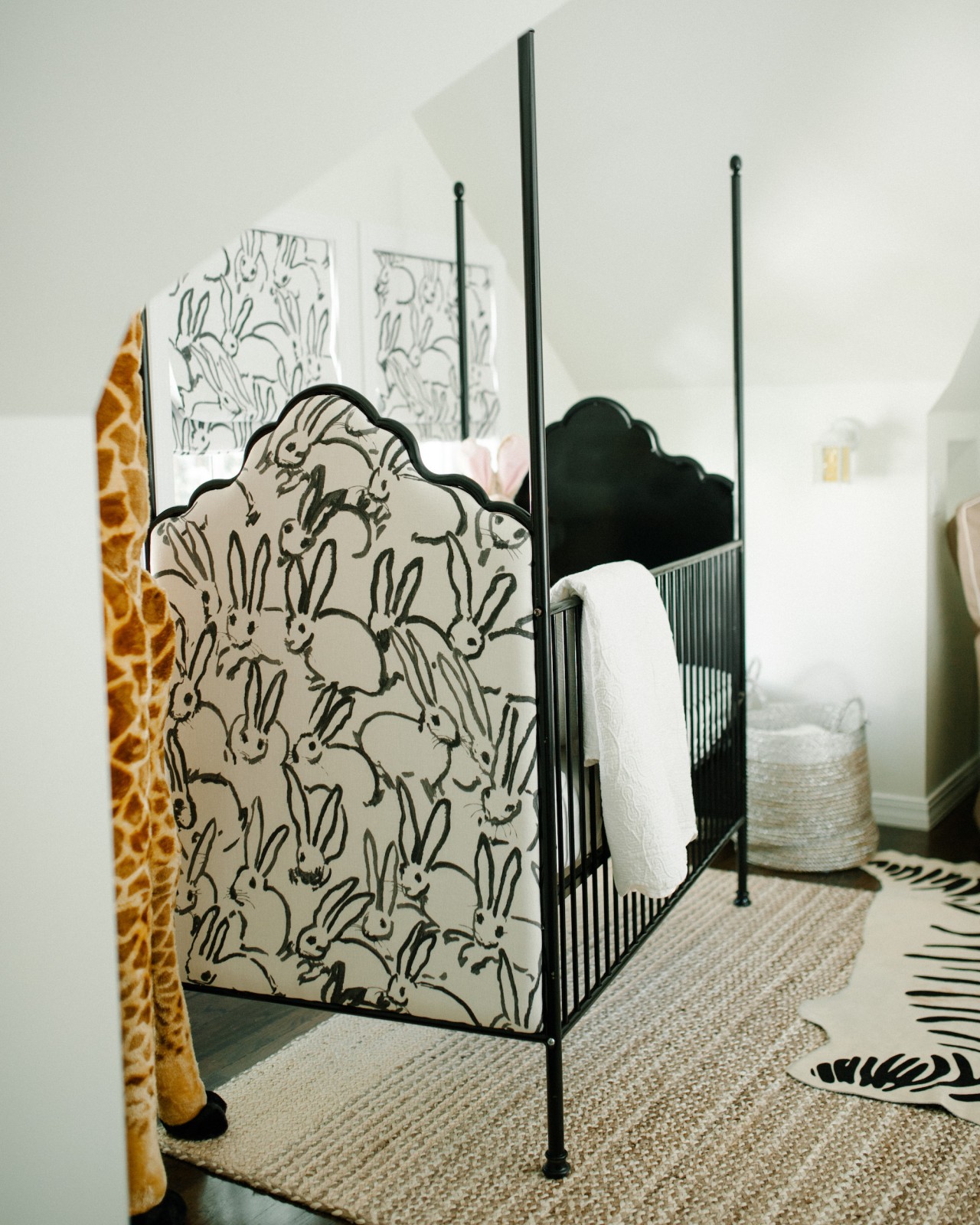
Designer: Brooke Schultz
Regardless of whether your crib is a standard one or convertible, your baby will spend a substantial amount of time in it. Enhance the environment by adding a mobile featuring felt animals or colorful stars for your baby to play with. Opting for a convertible crib that transforms into a toddler bed or a full-sized mattress ensures longevity as your baby grows. If there’s a worry about your child attempting to crawl out of the crib, investing in a toddler rail can offer added security. You can also consider that are designed with built-in drawers that provide extra storage space for blankets, sheets, baby gear, and toys.
• Diaper Changing Station

Designer: Kelly Foyt
If space permits, you have the option to incorporate a changing table into your nursery. However, many parents opt for changing toppers that can be securely attached to a dresser or choose a combo crib to make the most of the available square footage.
• Introduce a Rocking Chair
You’ll invest a significant amount of time feeding, burping, reading, and bonding with your baby, therefore, comfortable seating is essential. Consider incorporating a spacious, comfortable rocking chair for late-night feedings and a side table with a lamp to enhance the room’s cozy ambiance.
• Add Wall Shelves
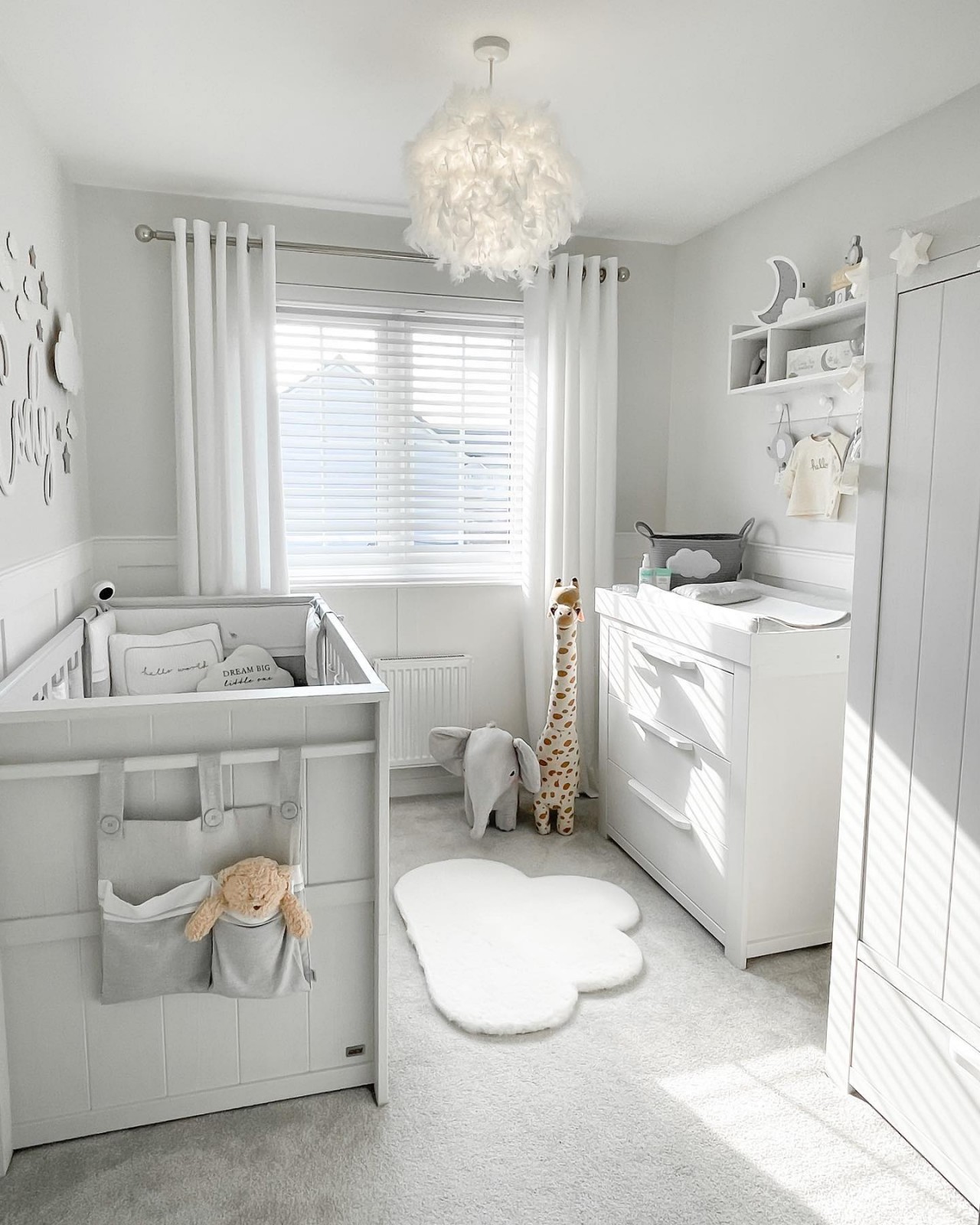
Designer: Gemma Deighan
Open shelves provide an excellent storage solution for bedtime storybooks. Wall shelves also serve to store items you want to keep nearby but out of the baby’s reach. Beyond their practicality, shelves offer a wonderful space to enhance the ambiance by adding items like a plant or a small stuffed animal.
By following these tips, nurseries can become memorable spaces where you’ll spend significant time with your baby right from the moment you bring them home to the transition into big kid beds.
The post How to Design a Children’s Nursery first appeared on Yanko Design.





